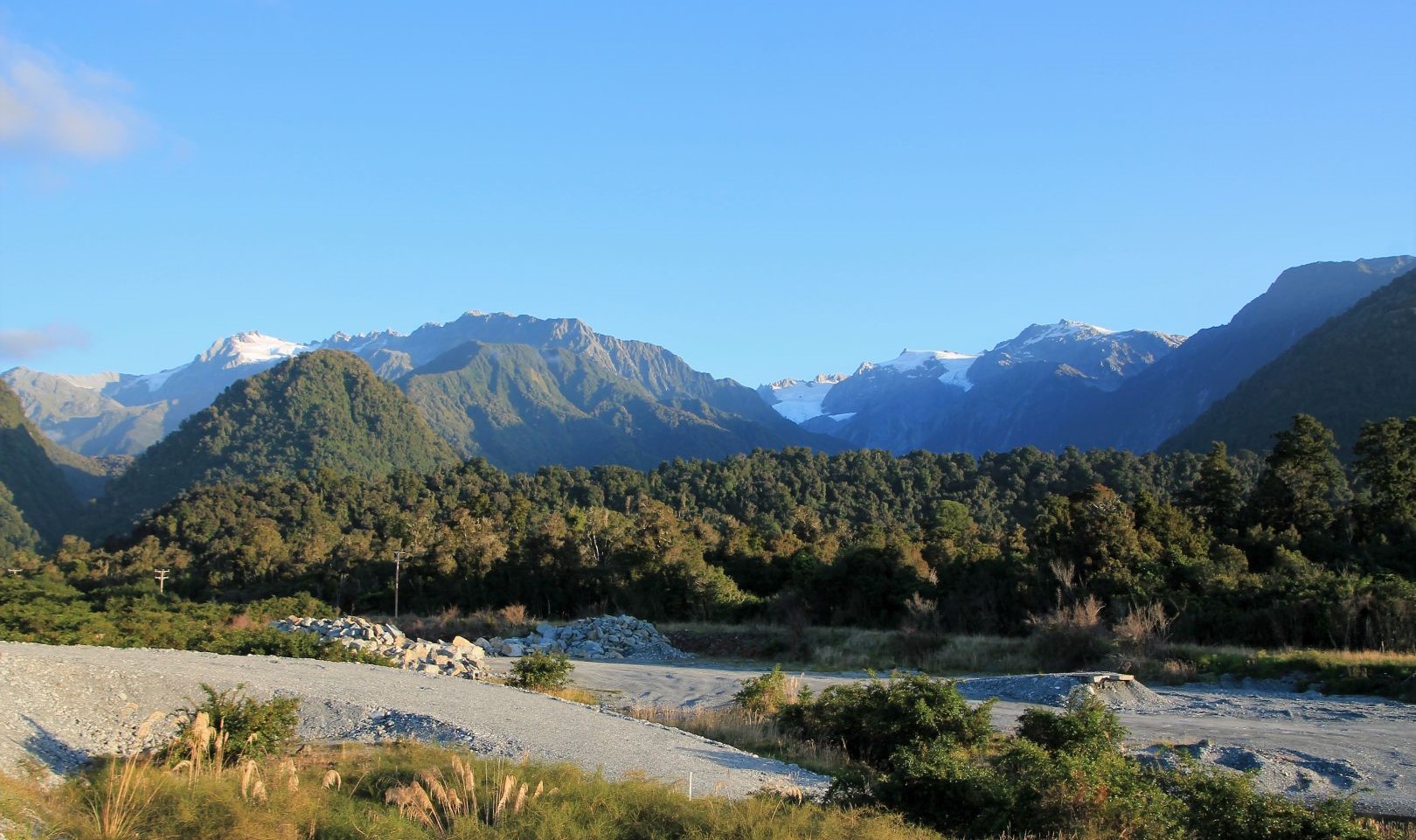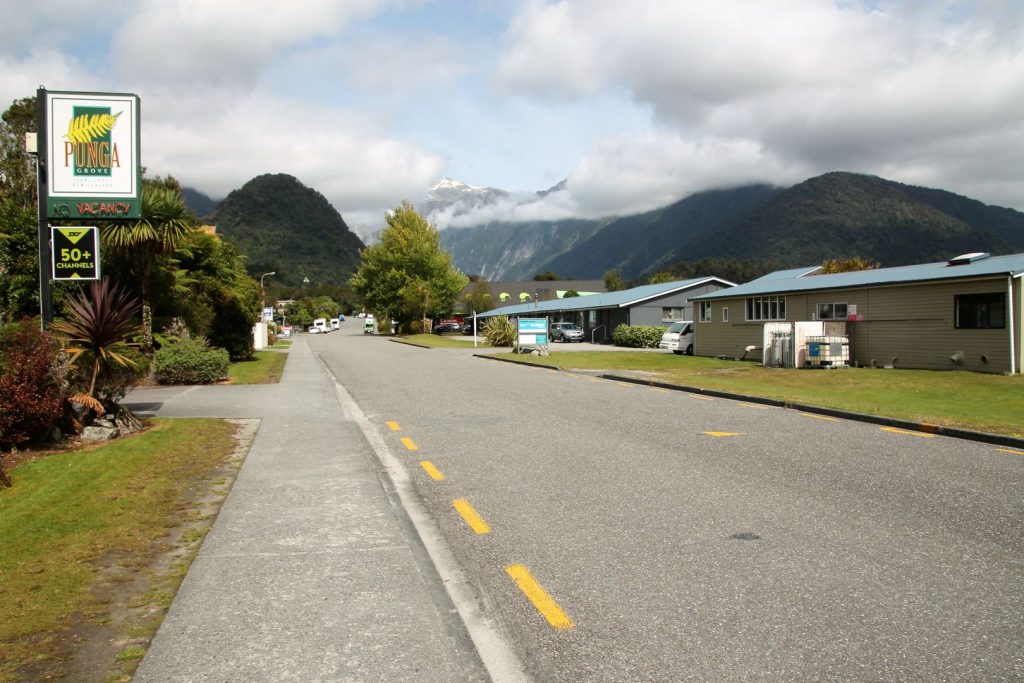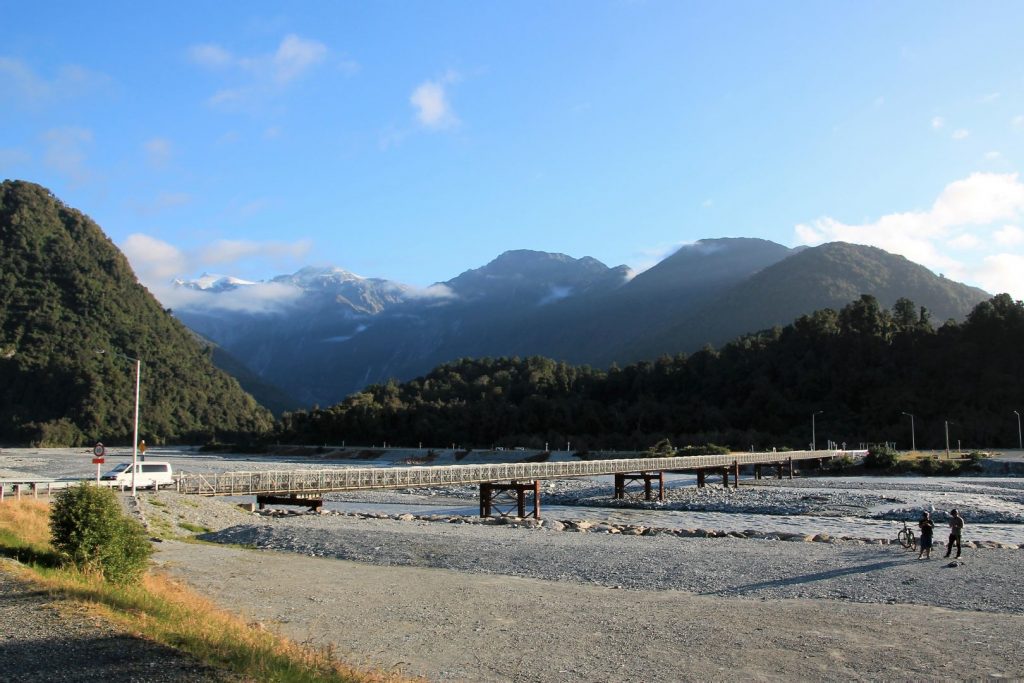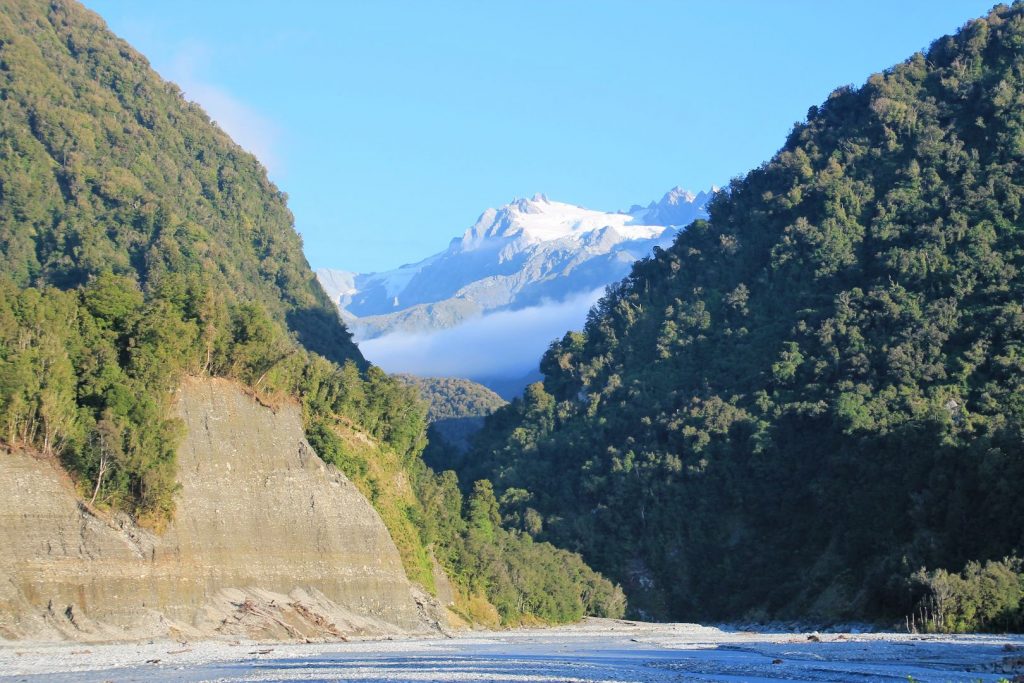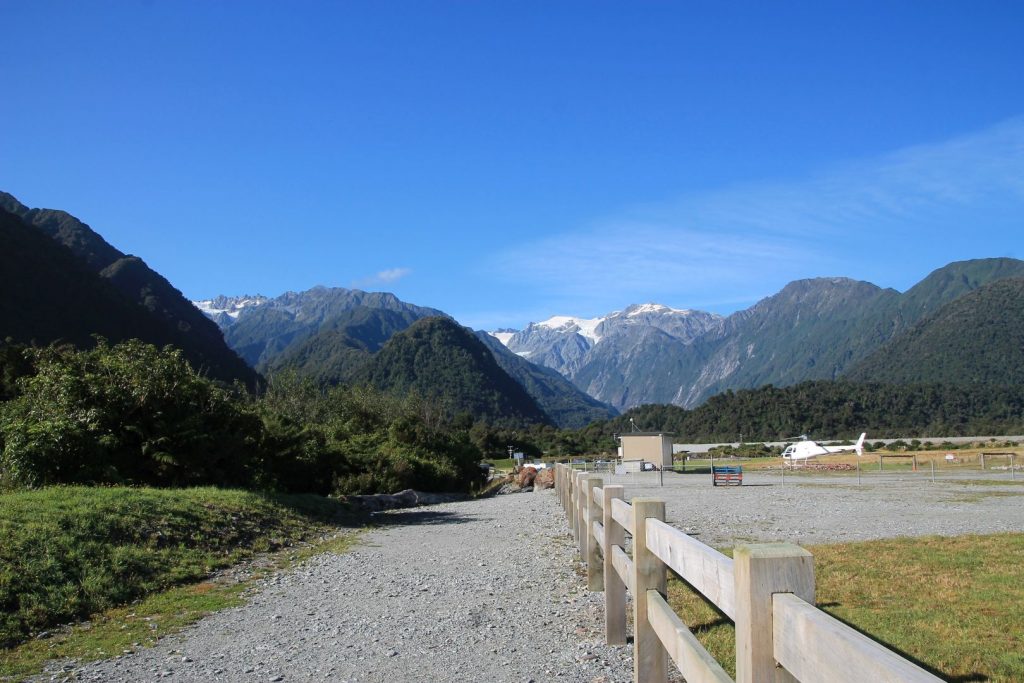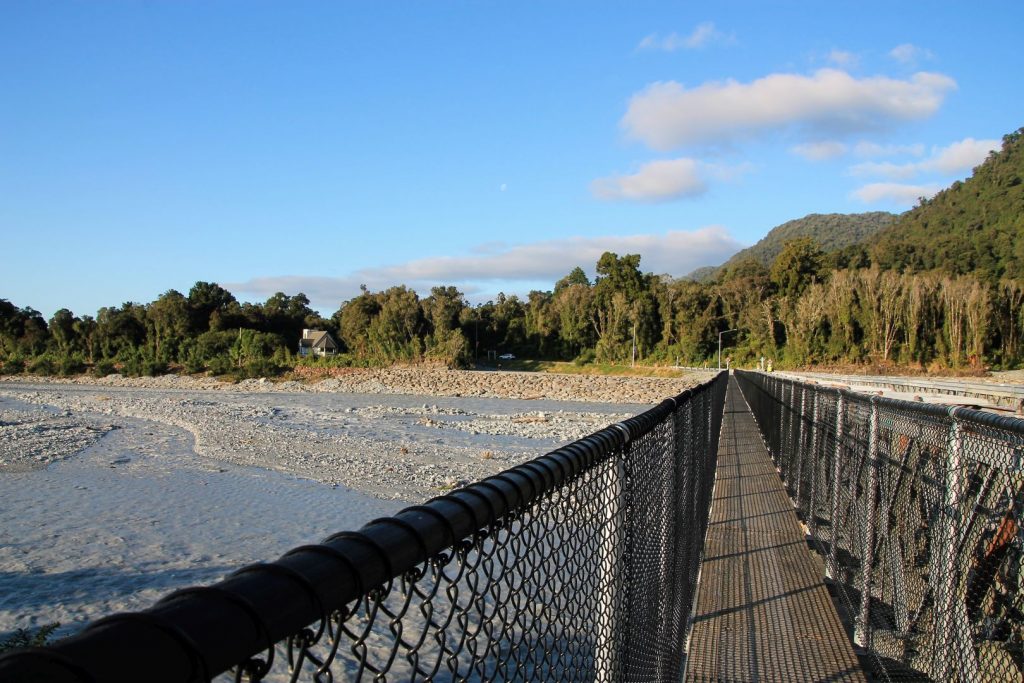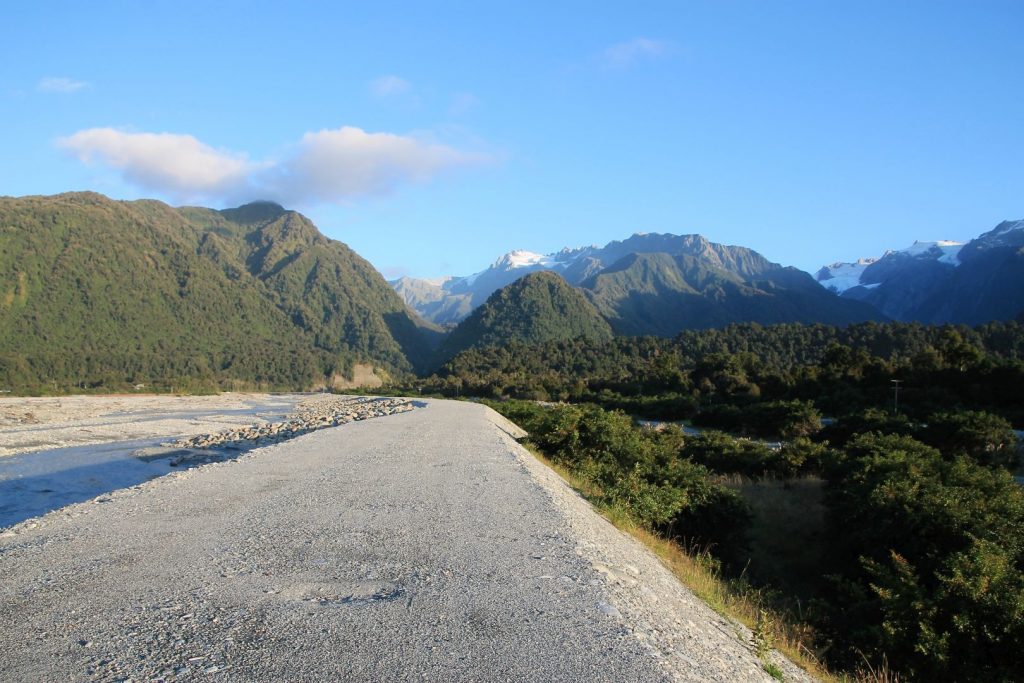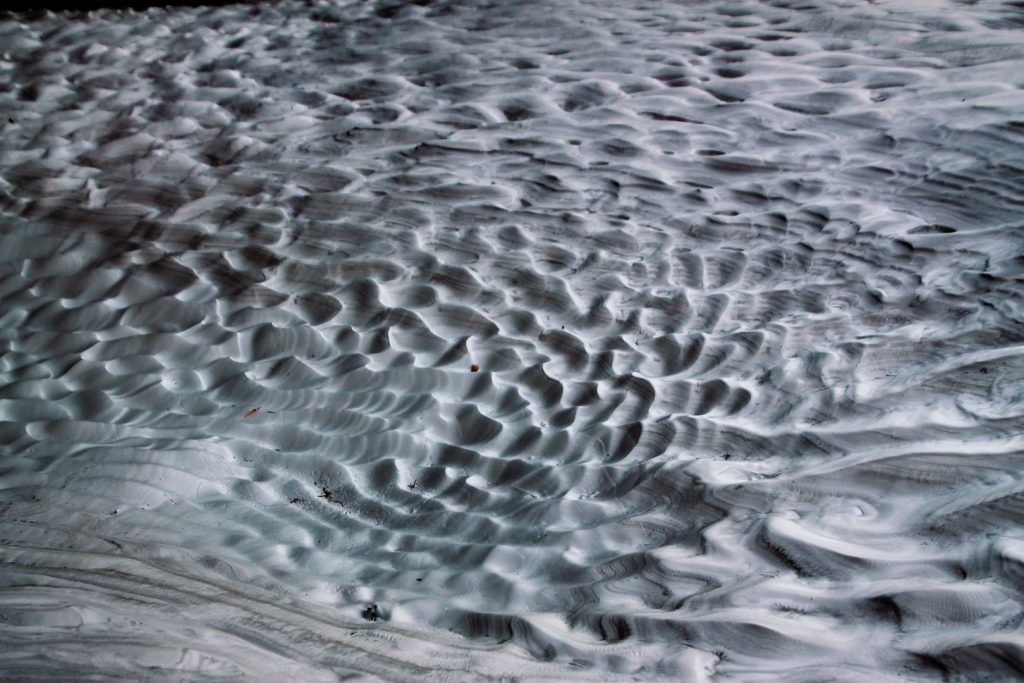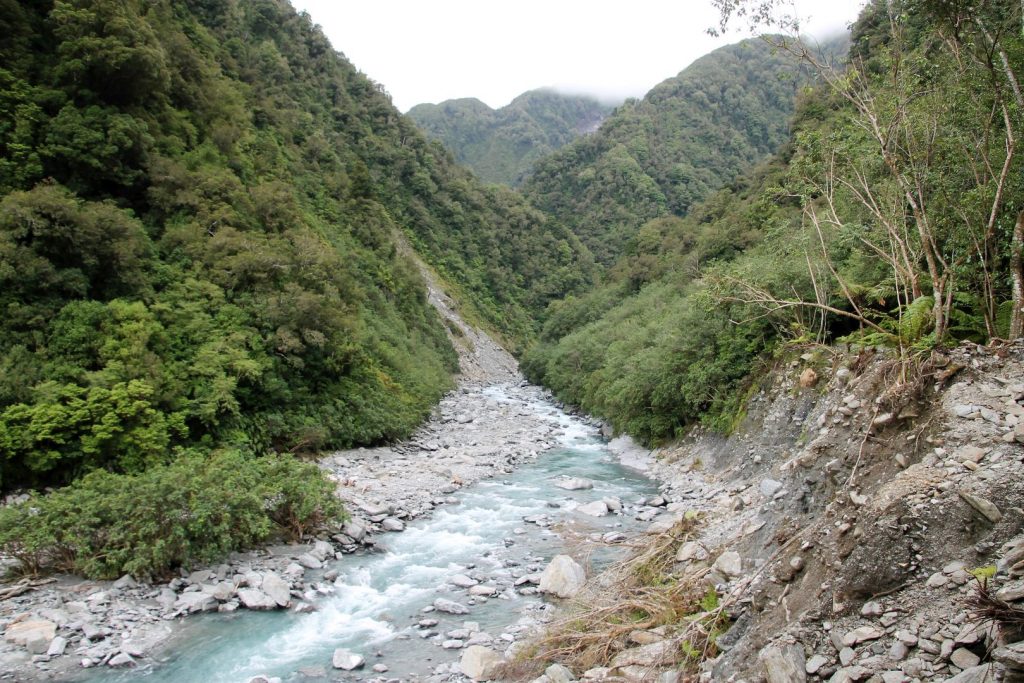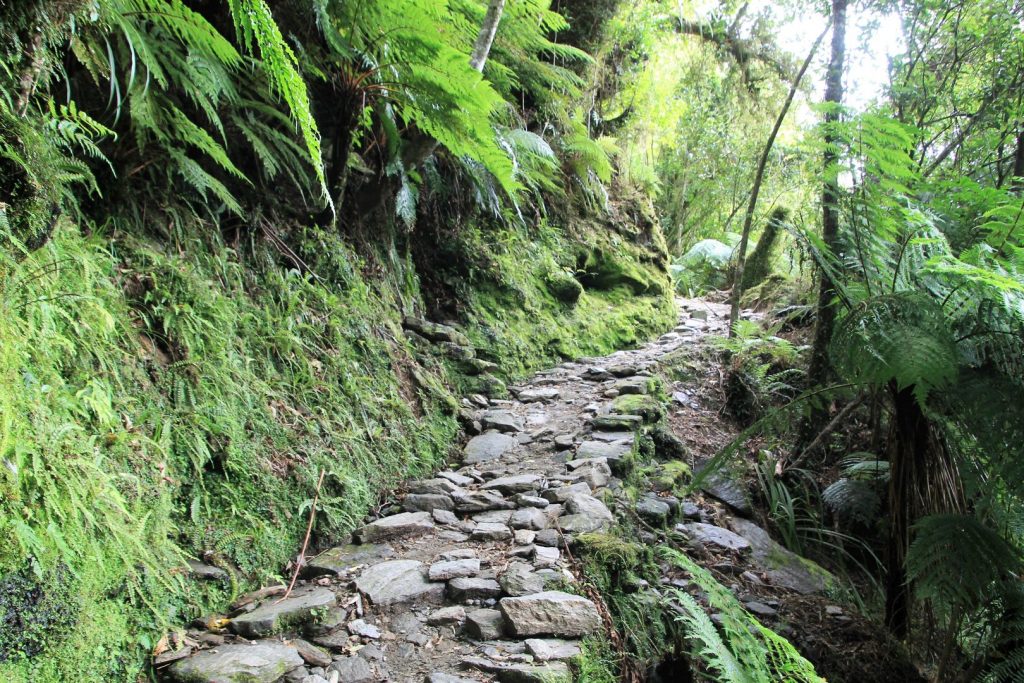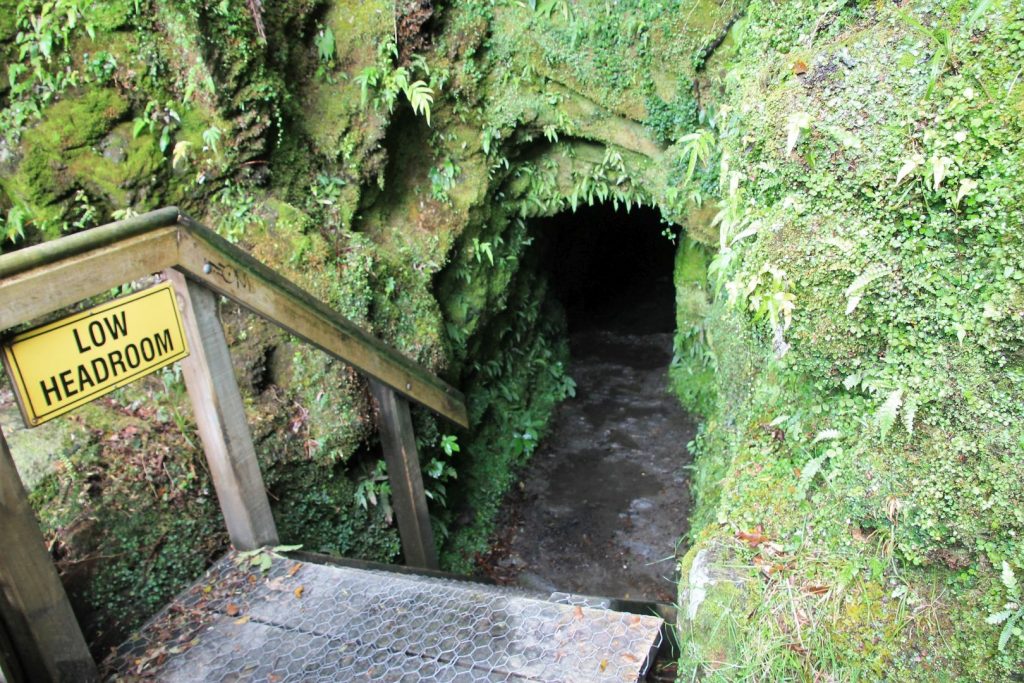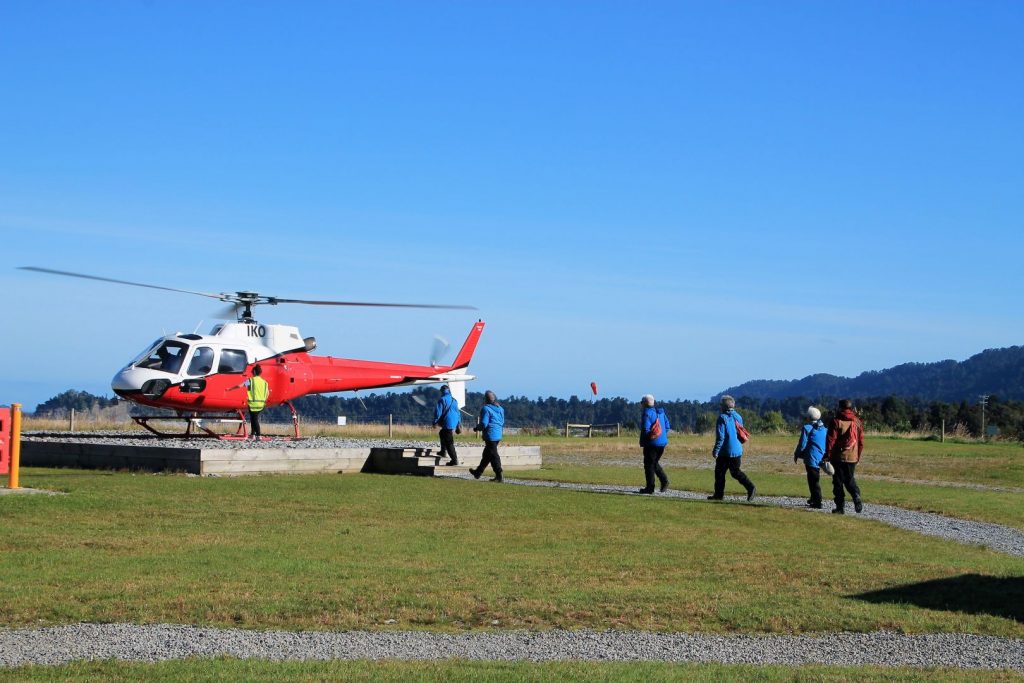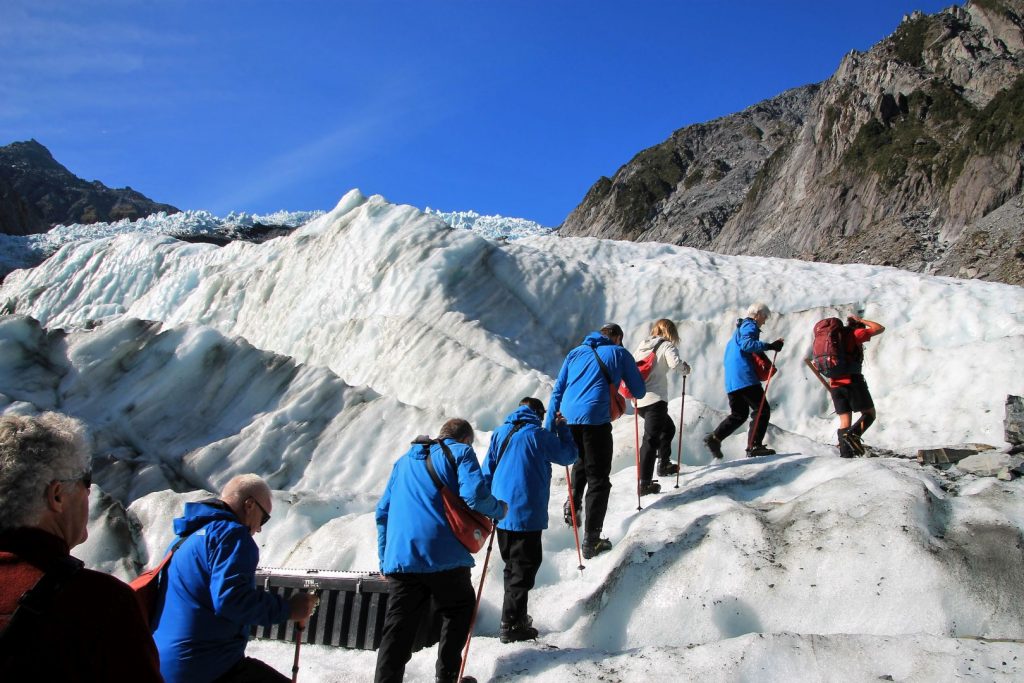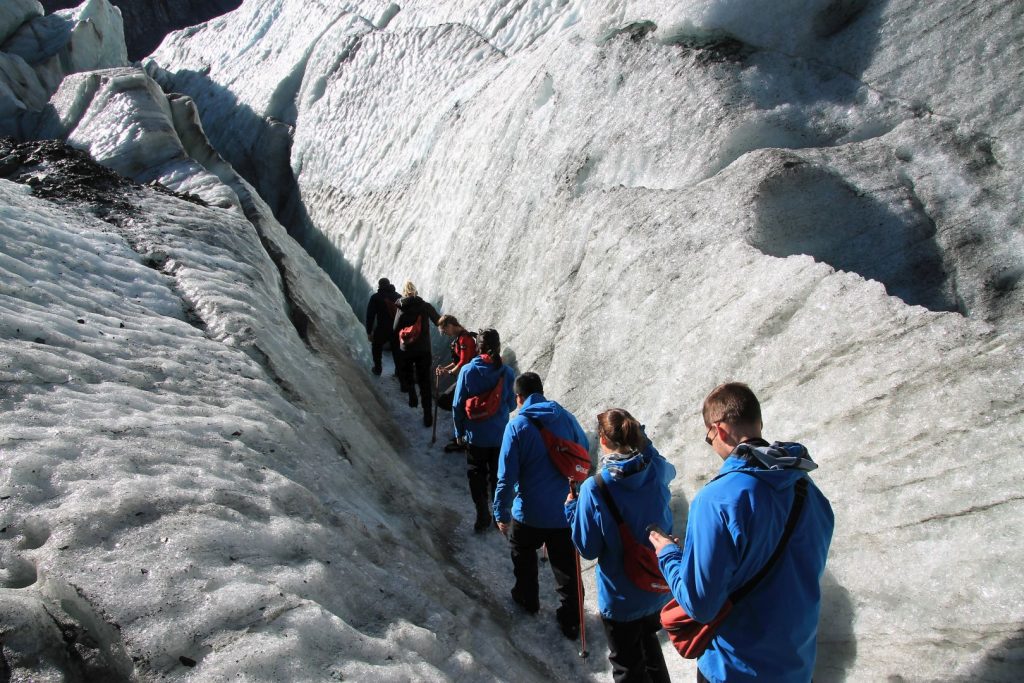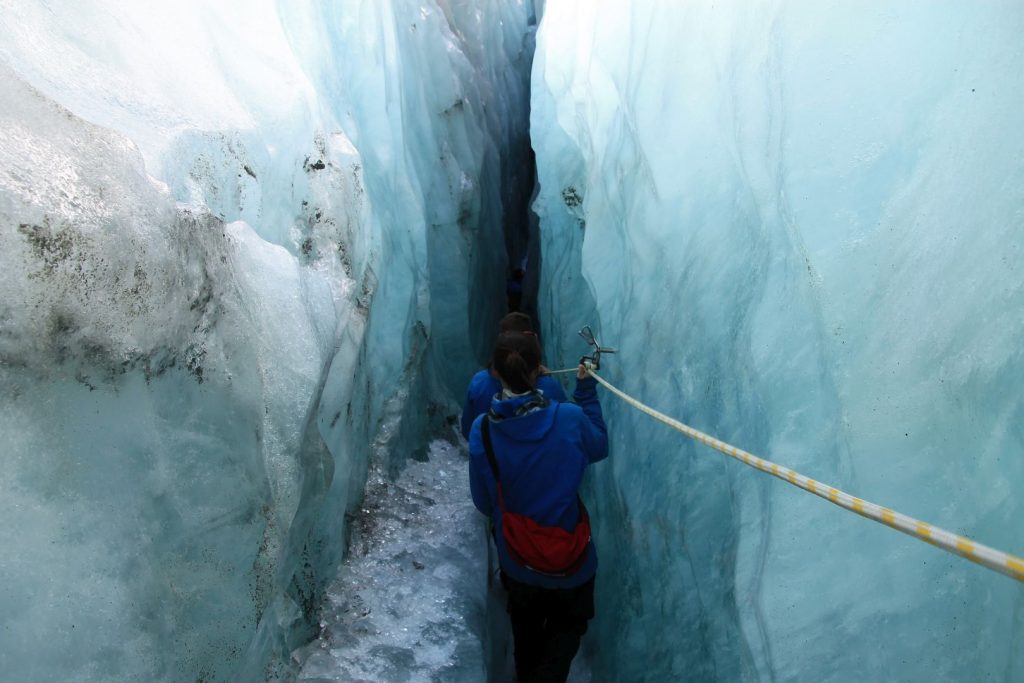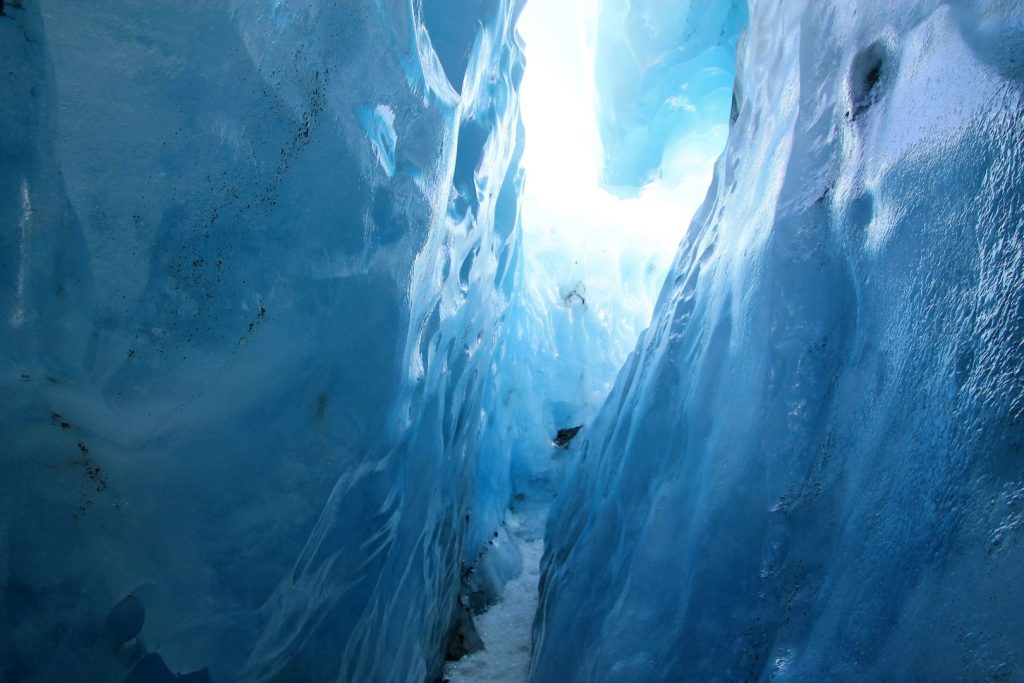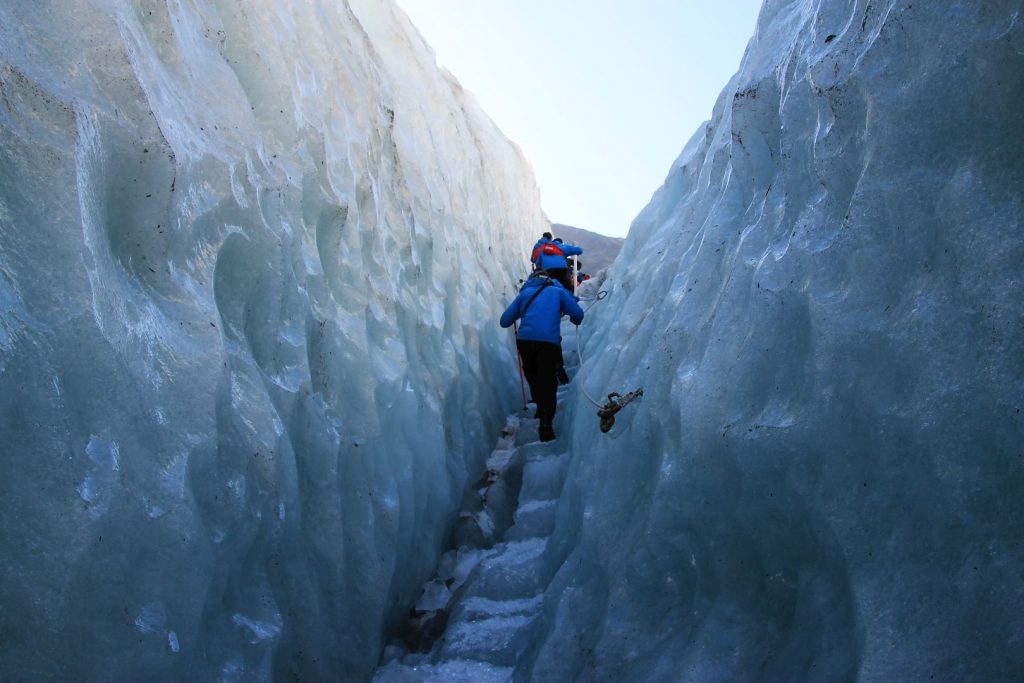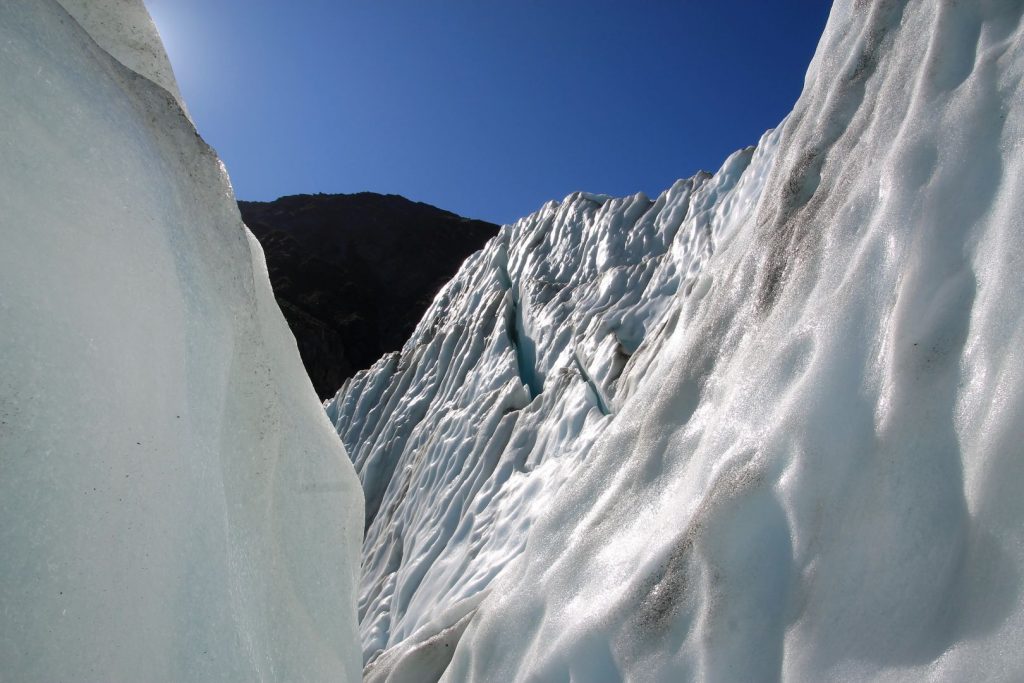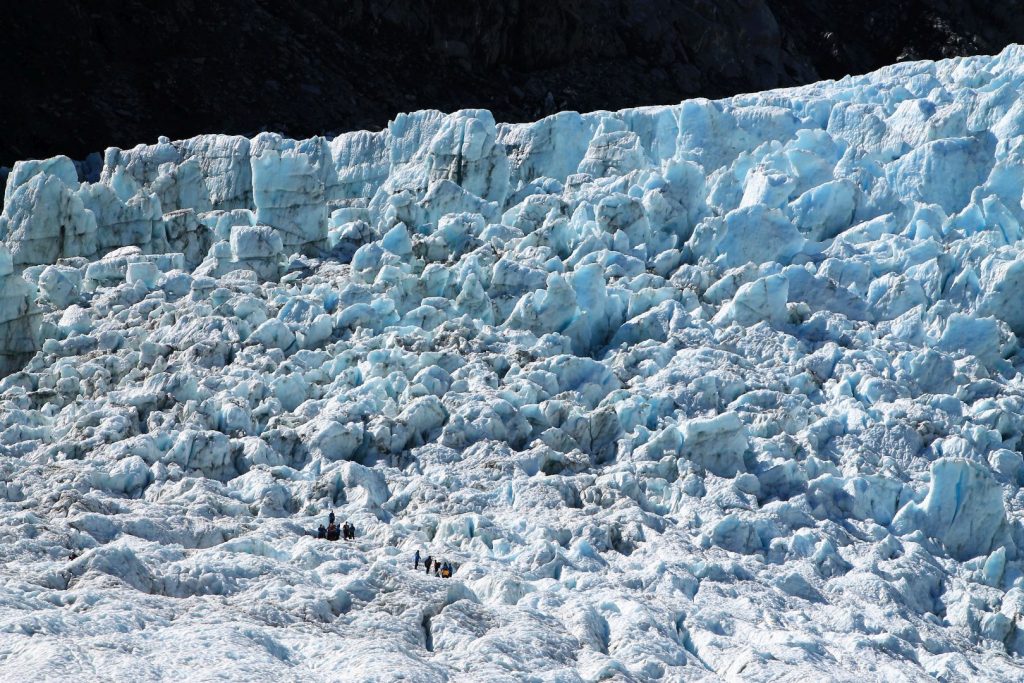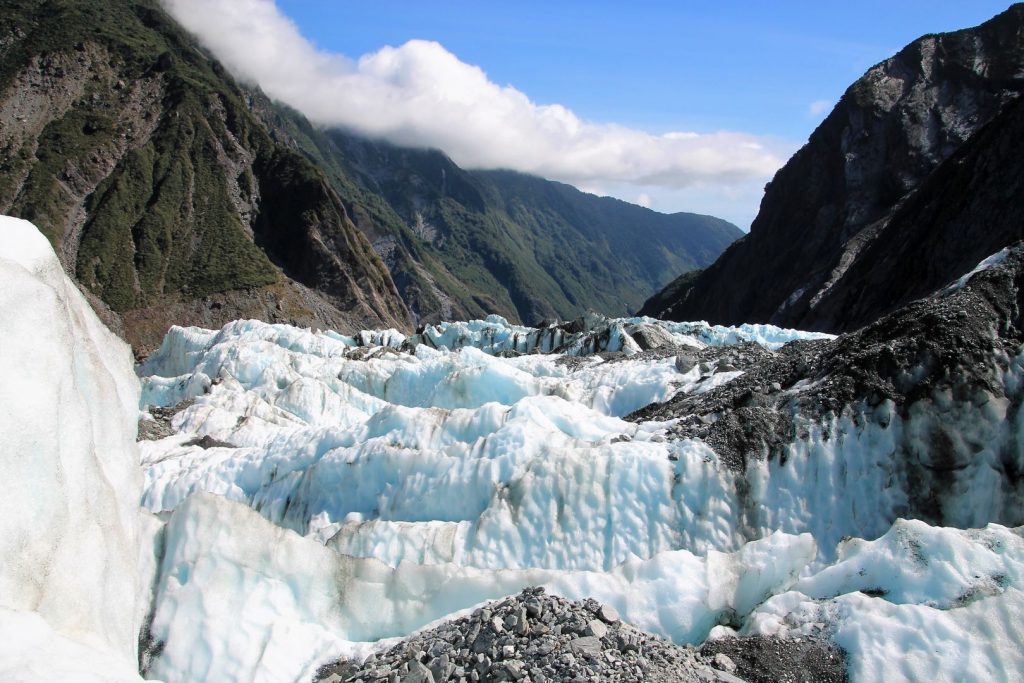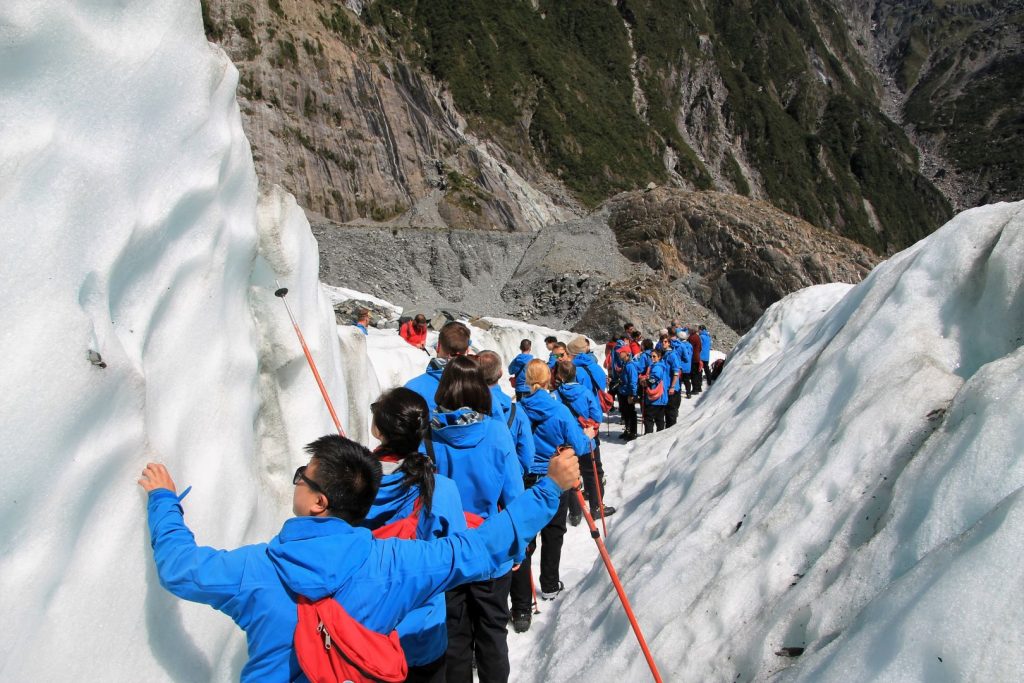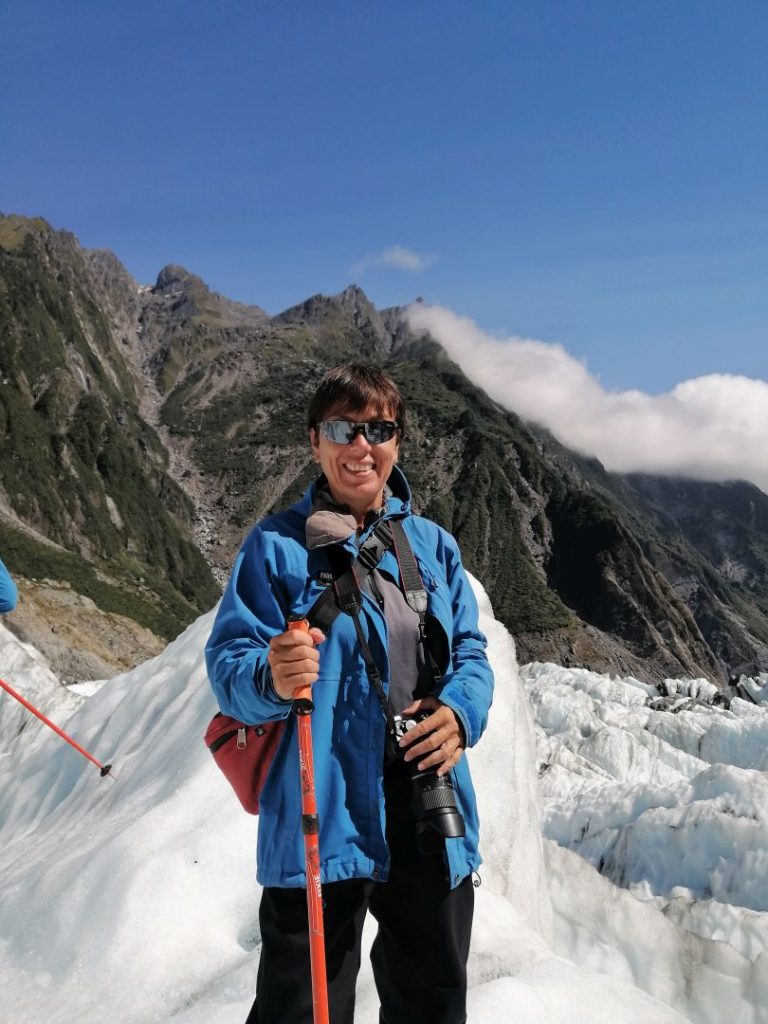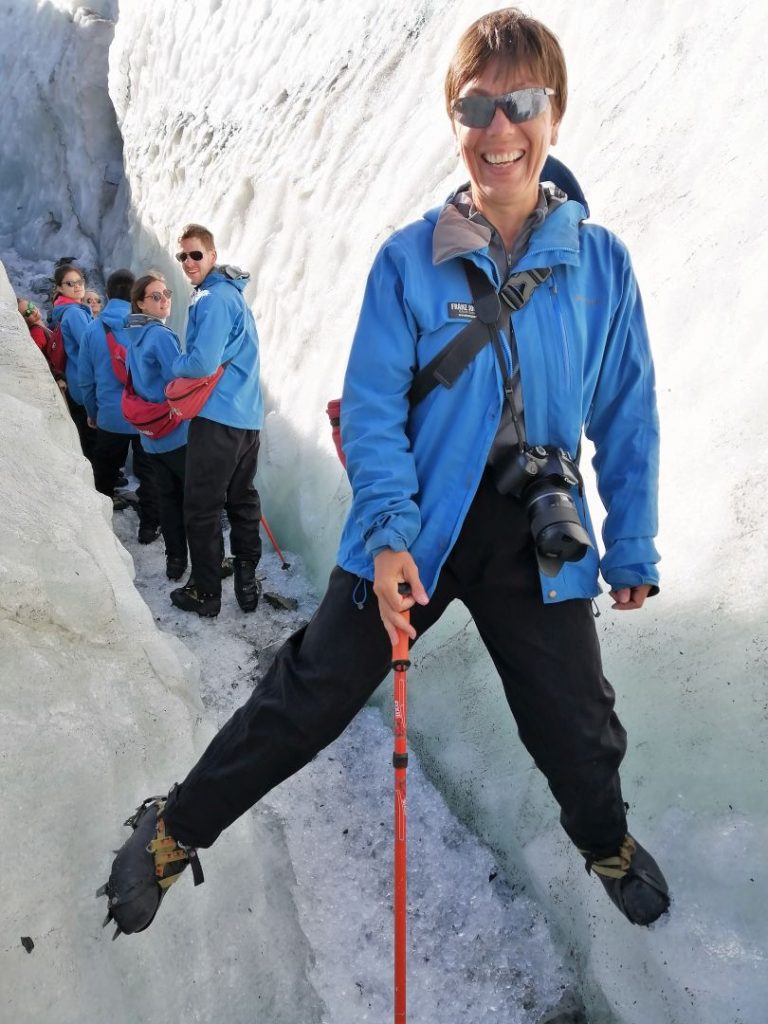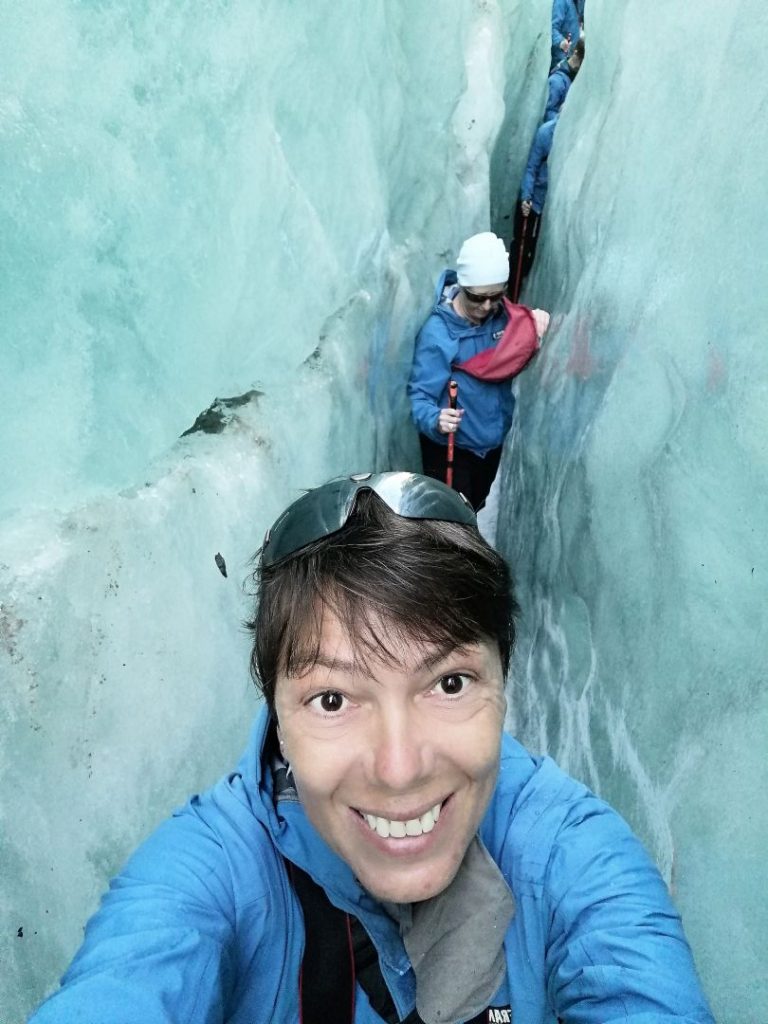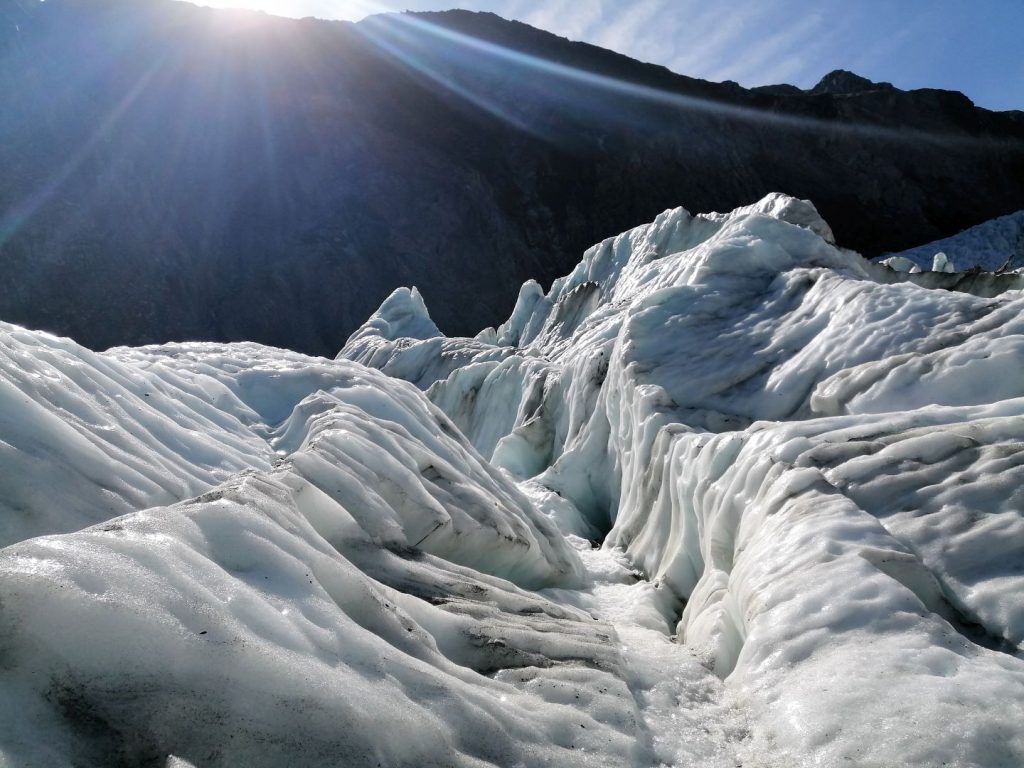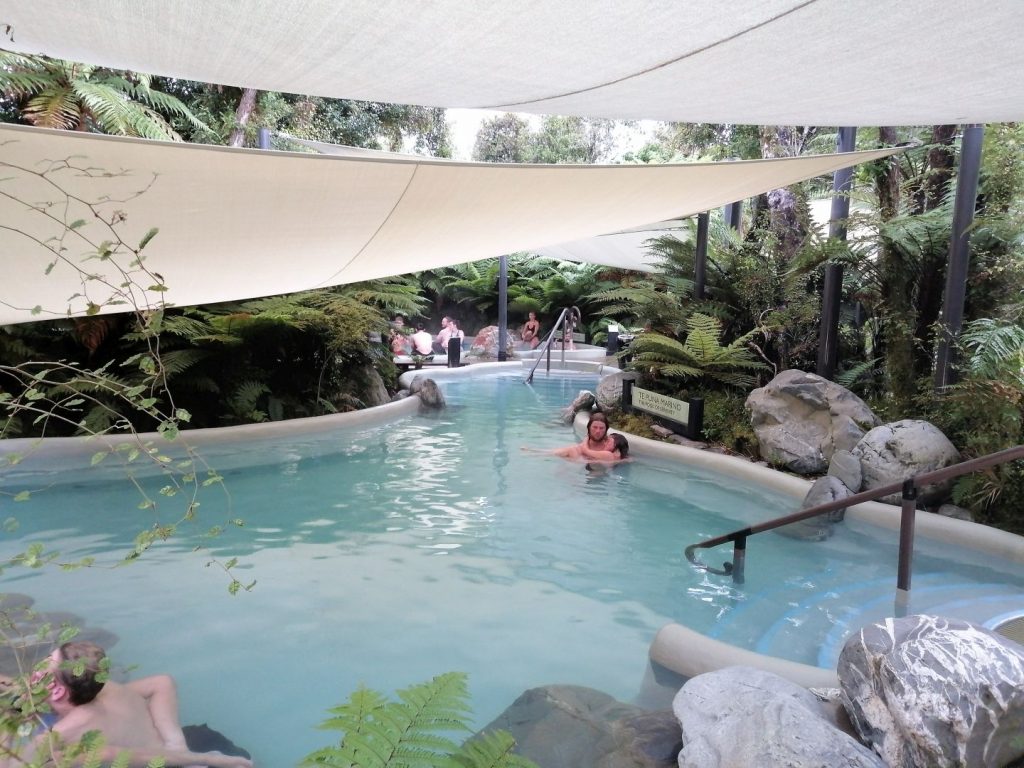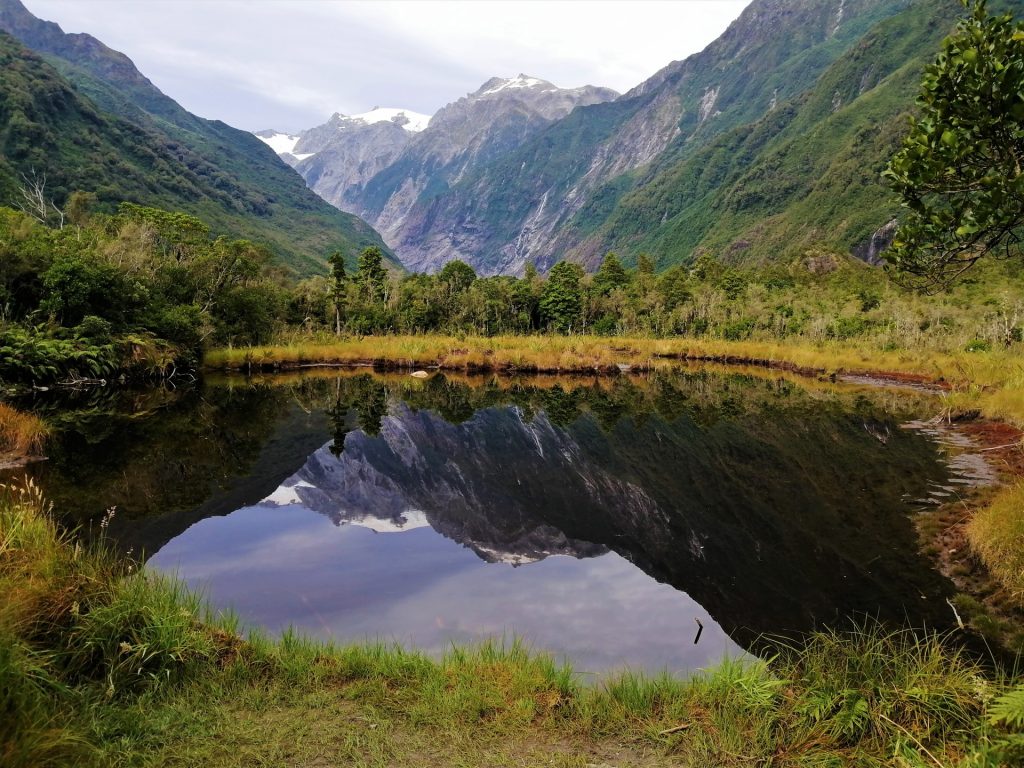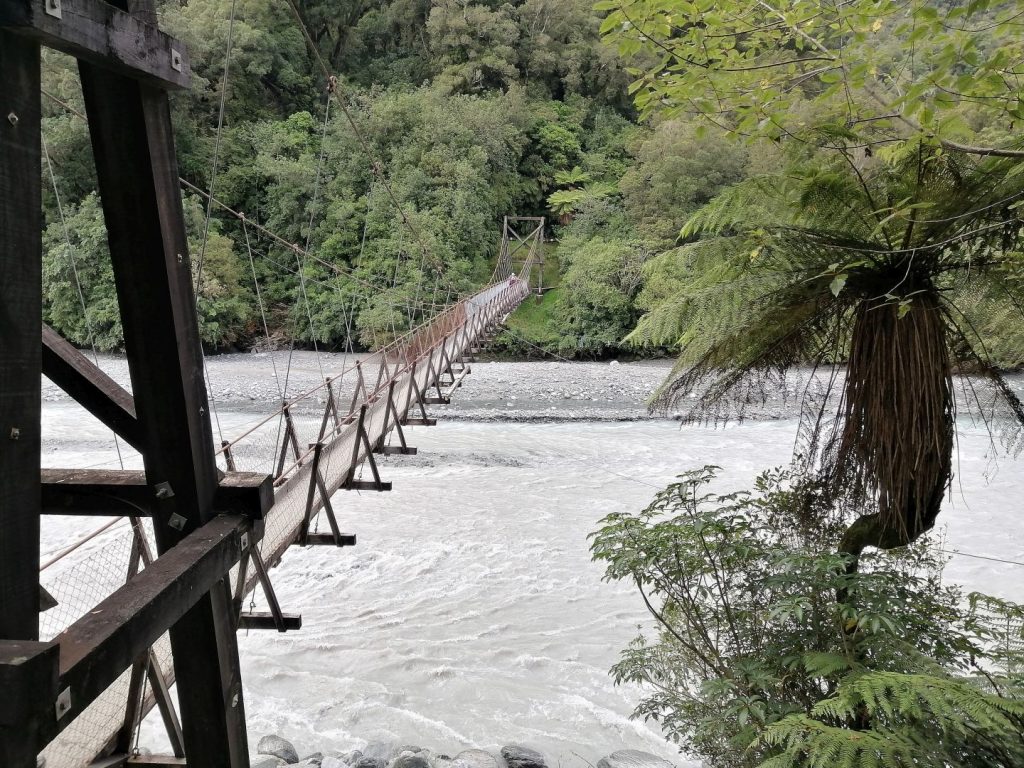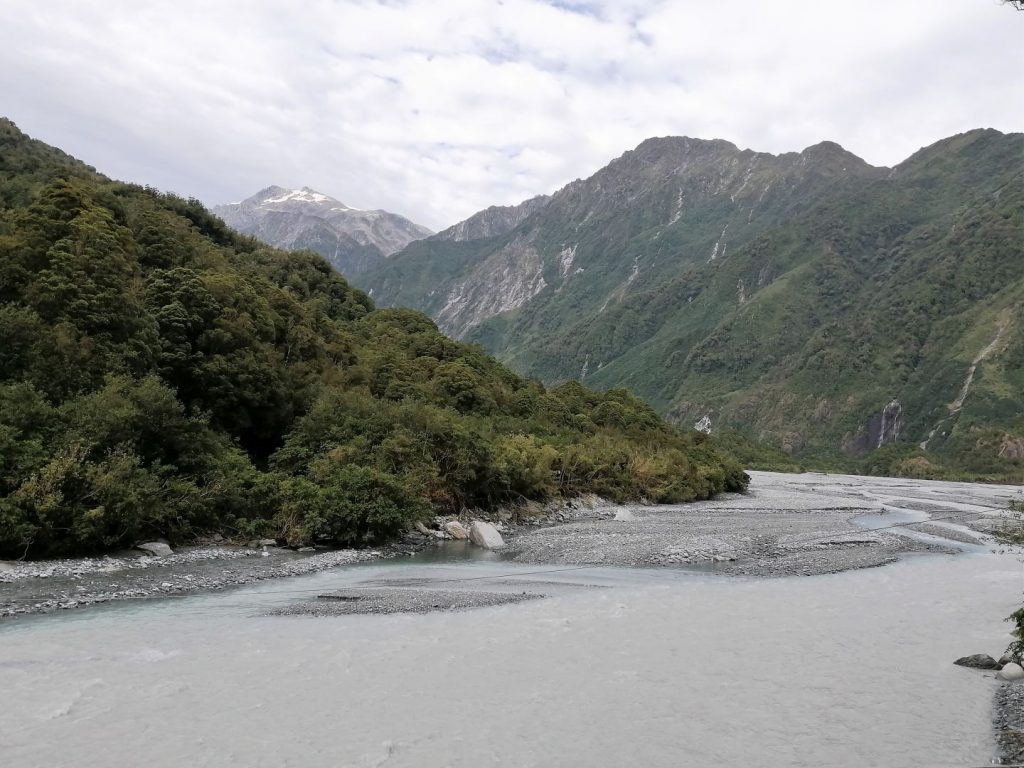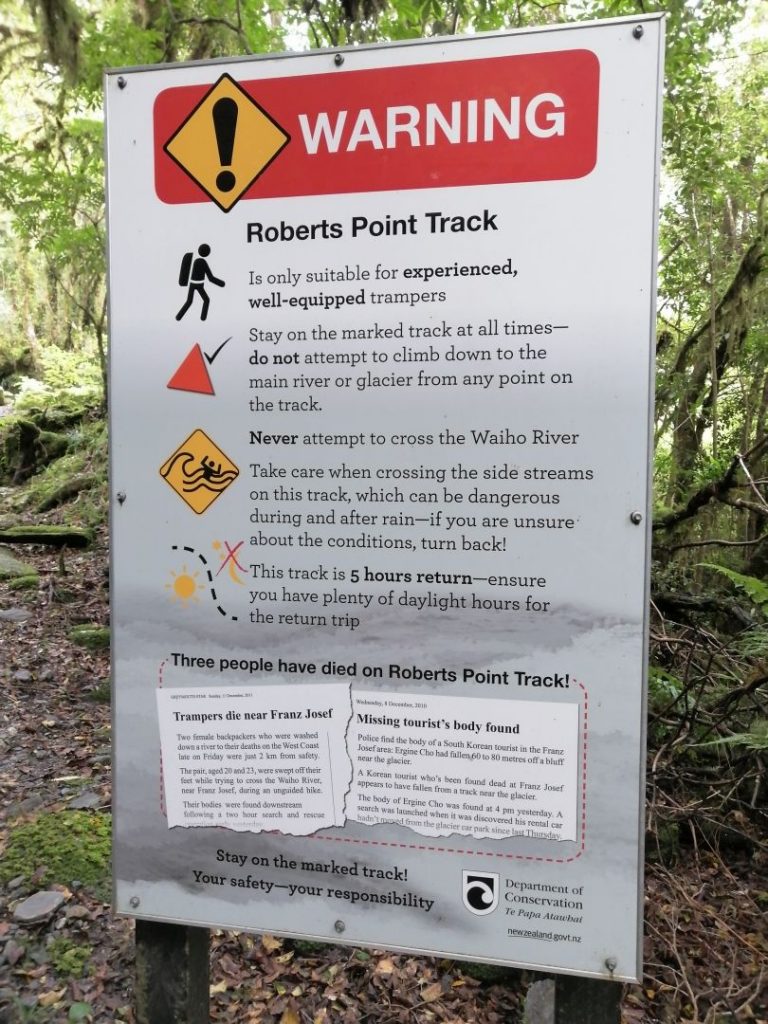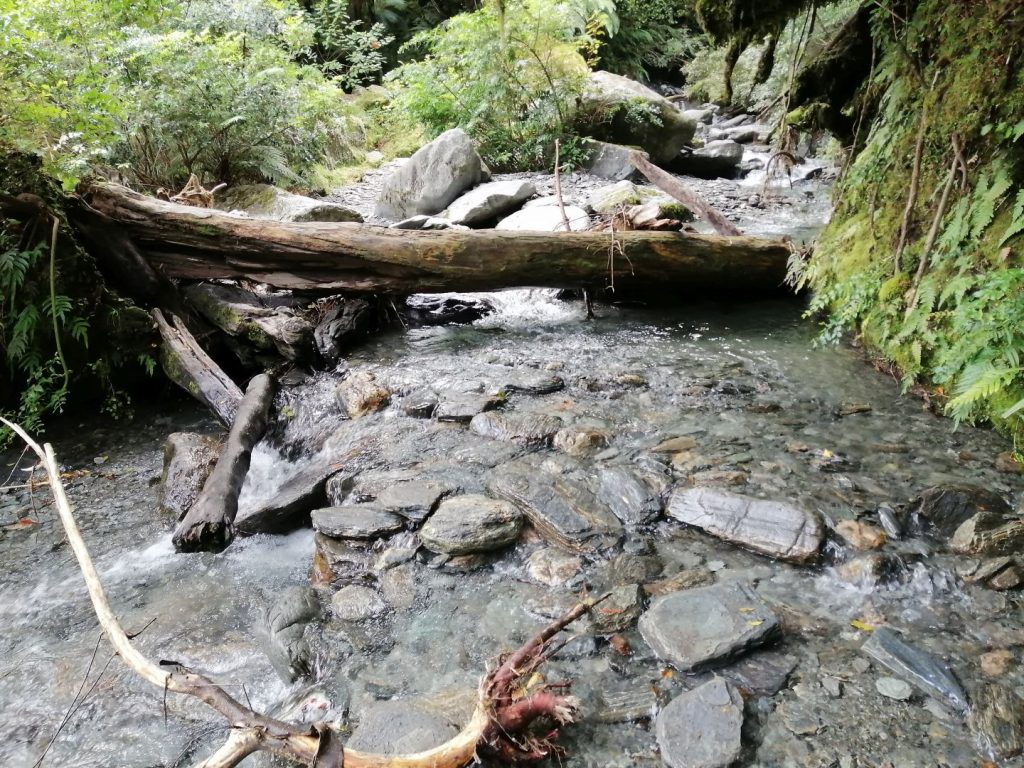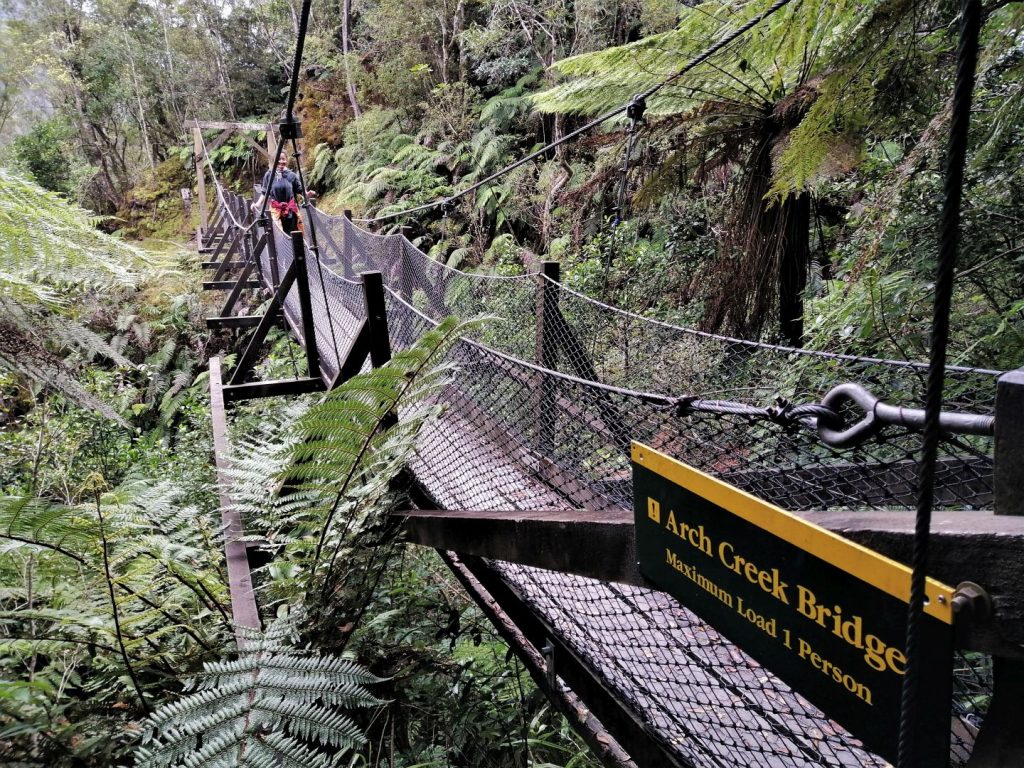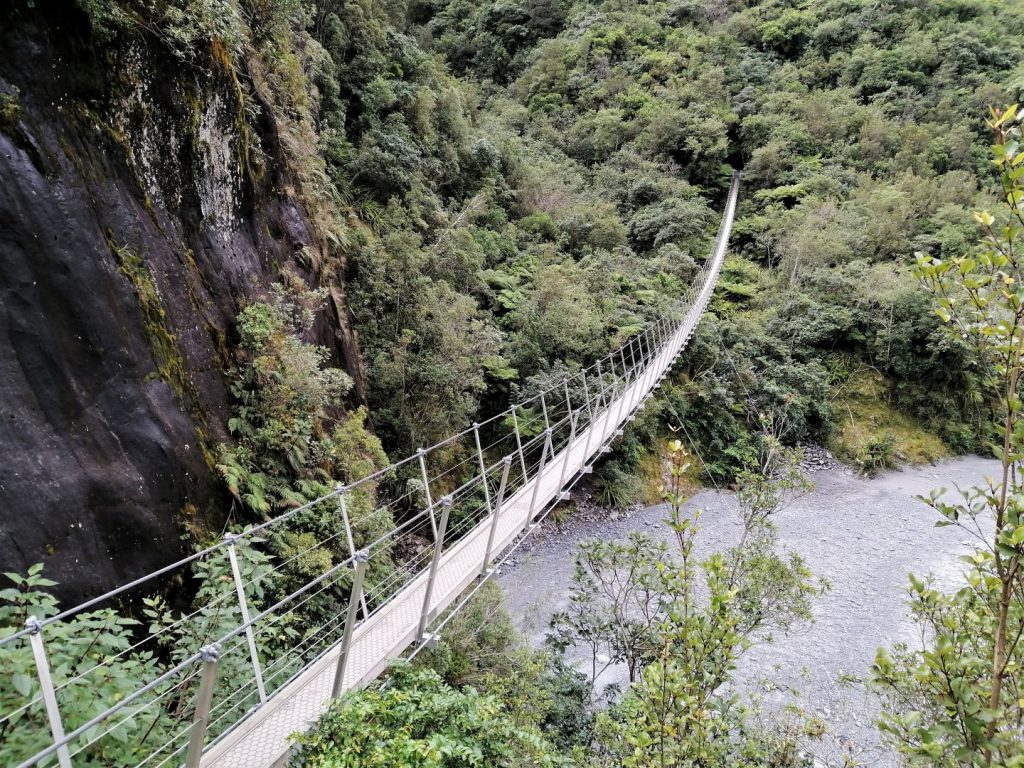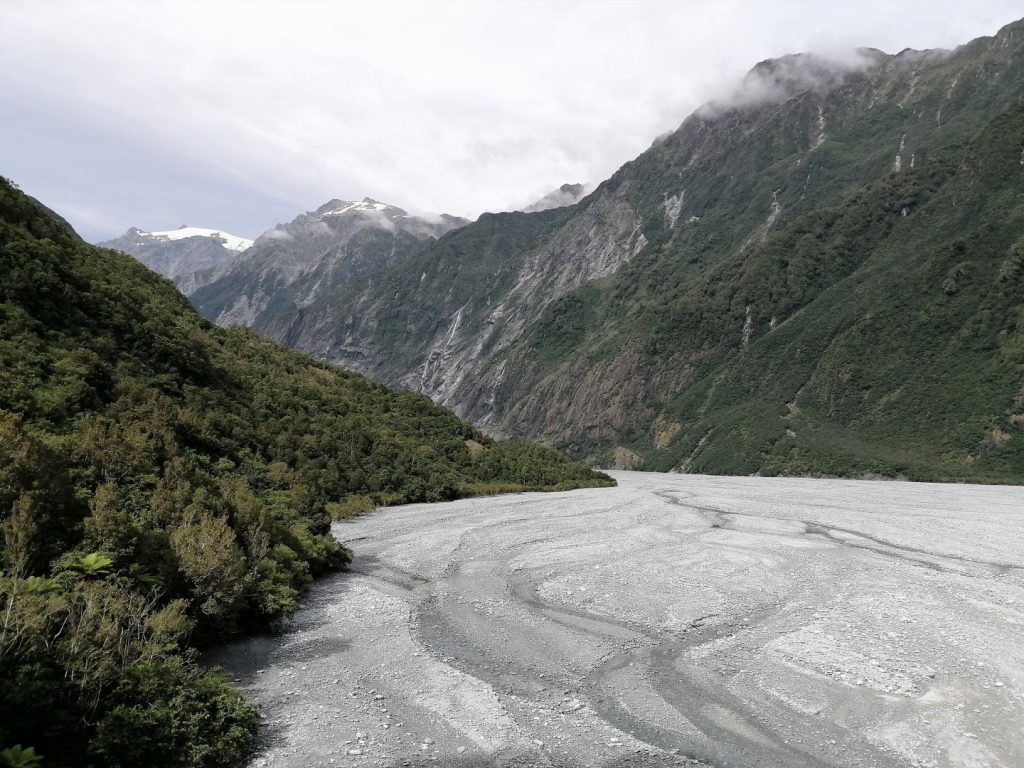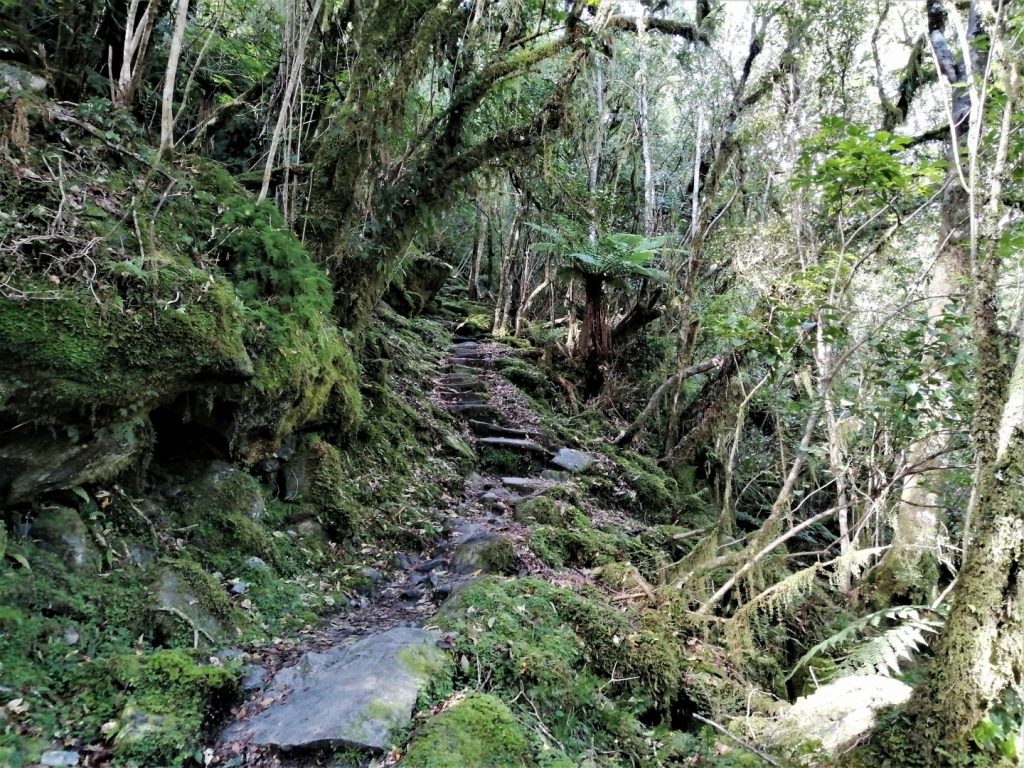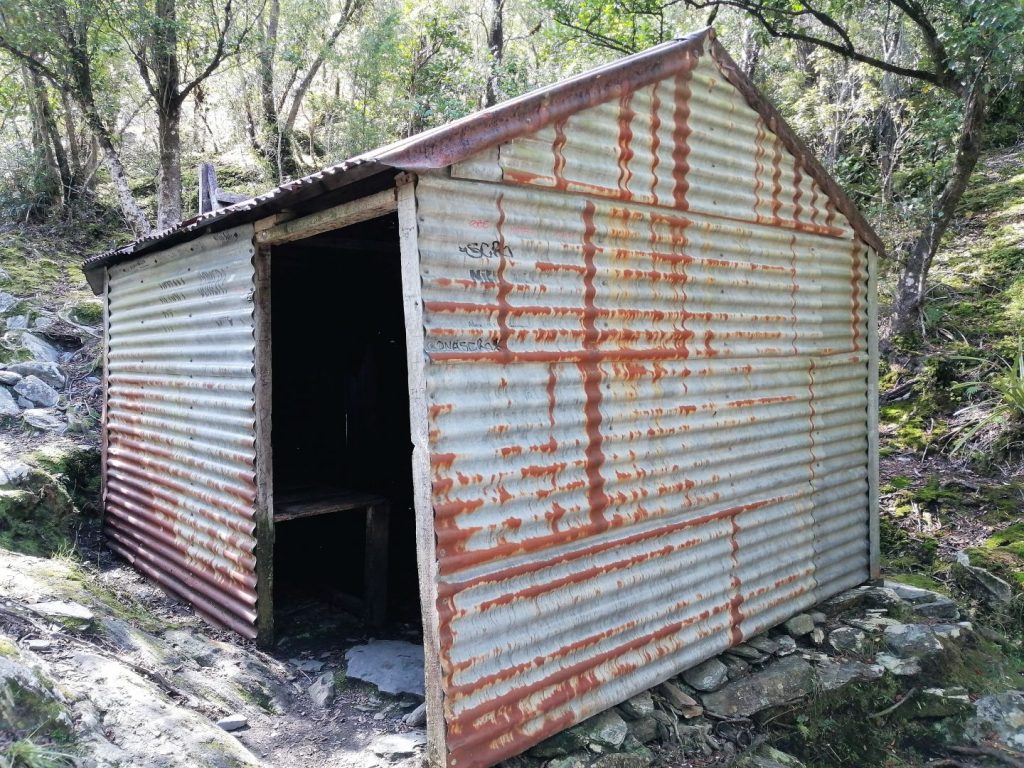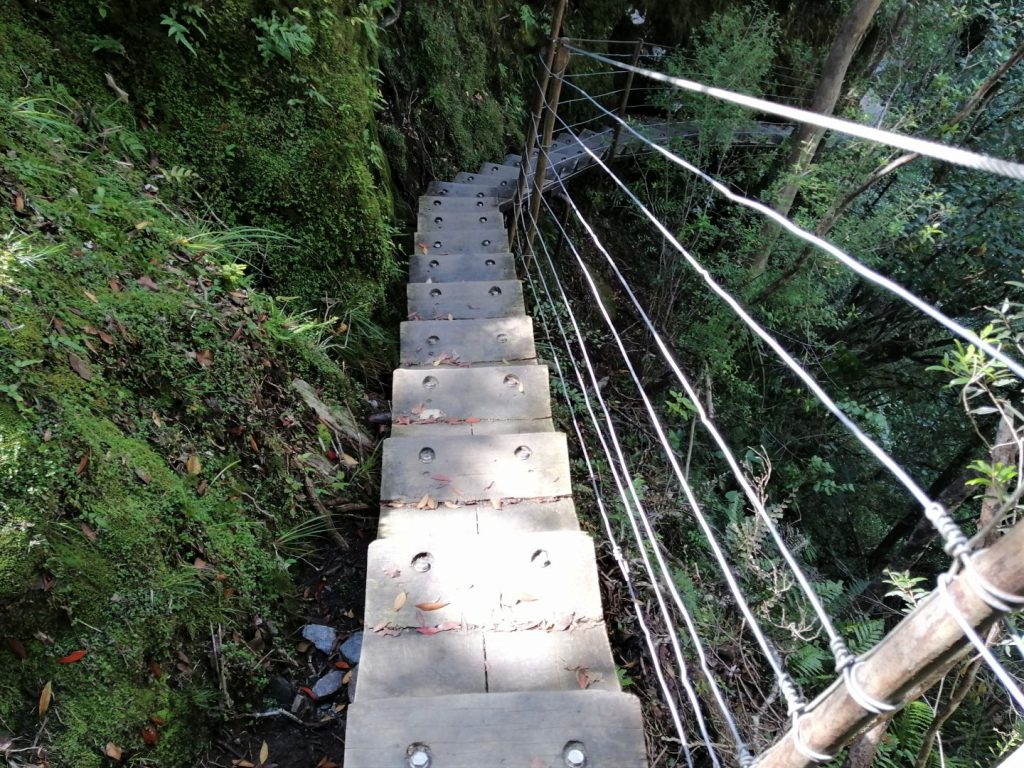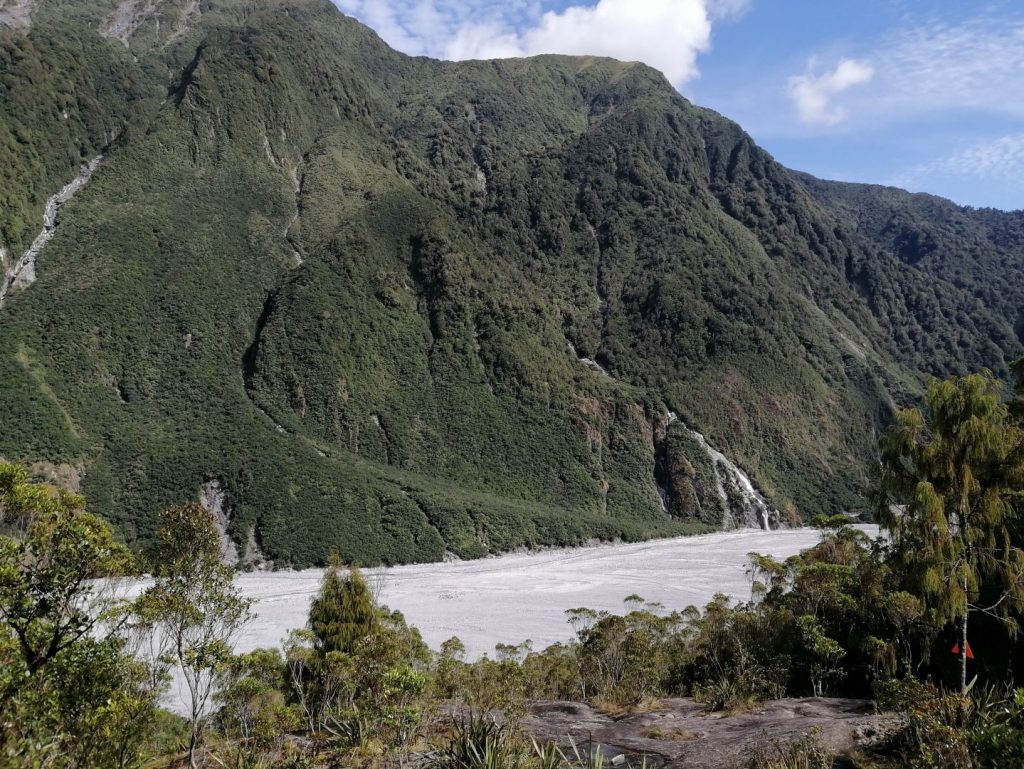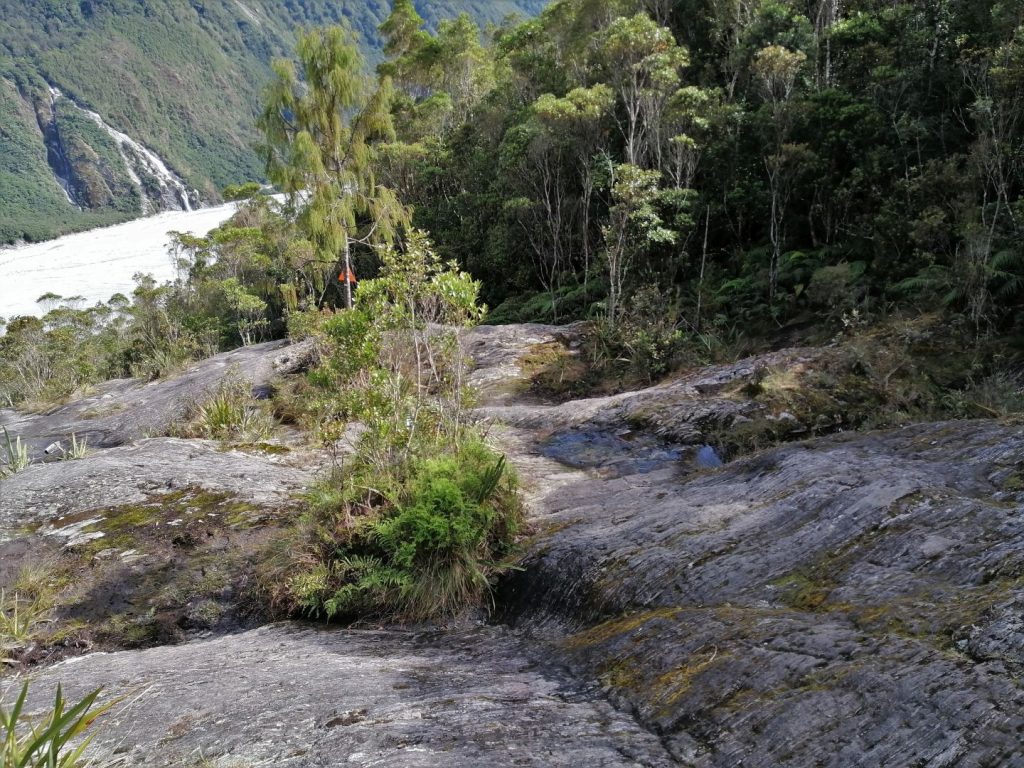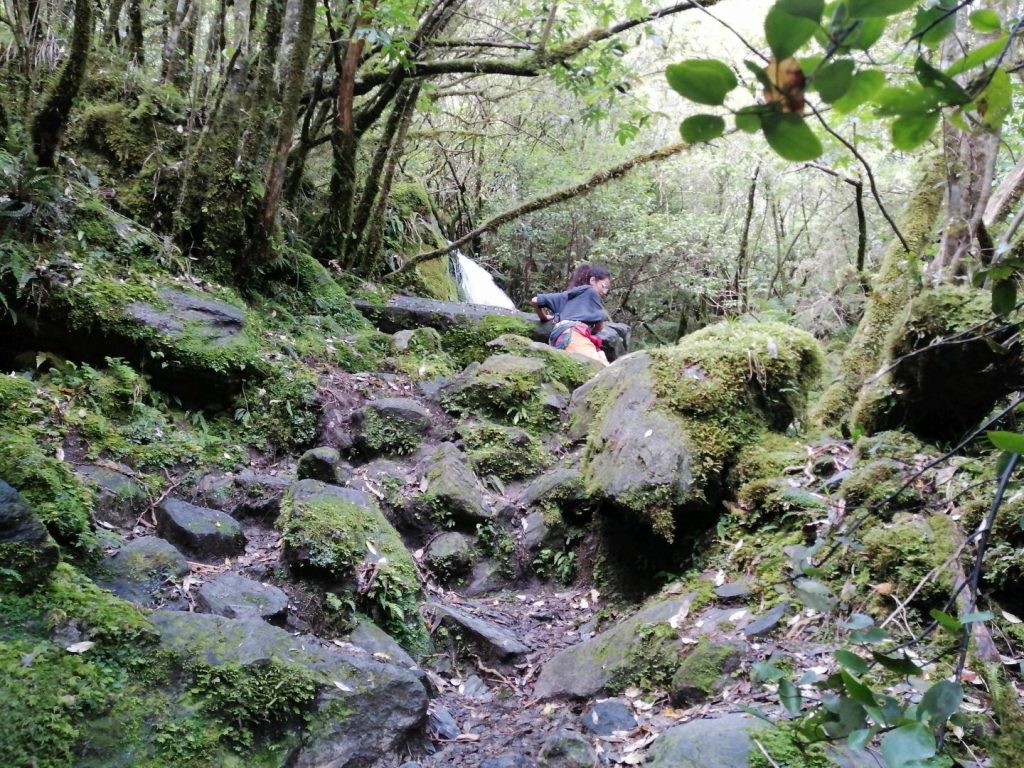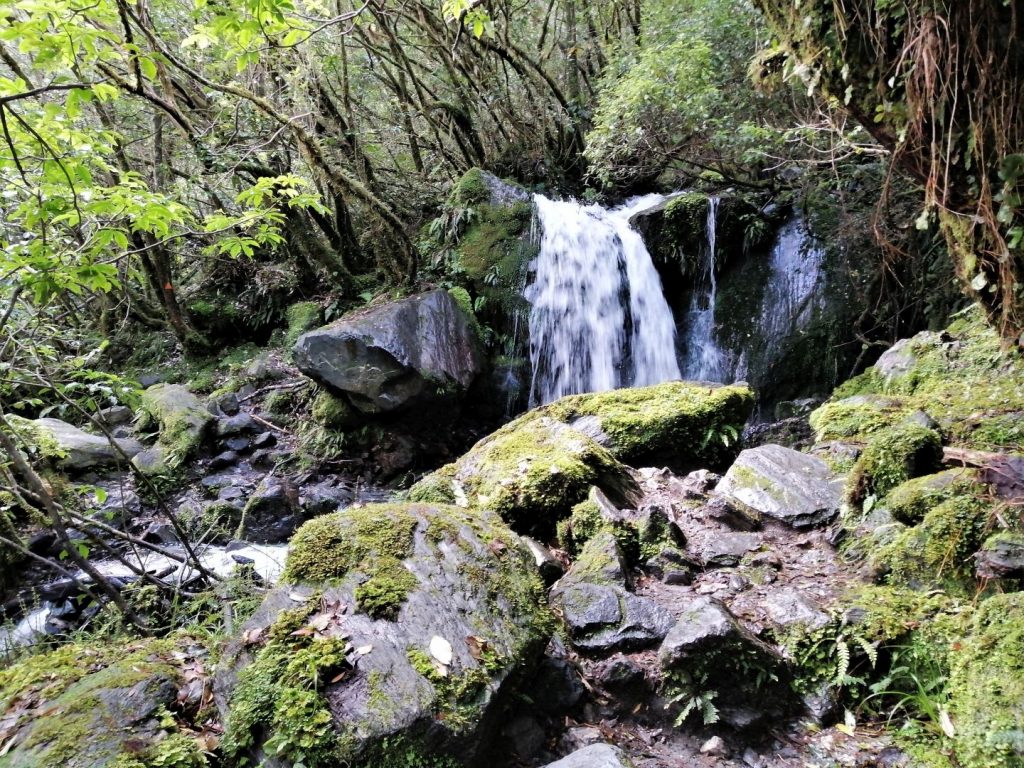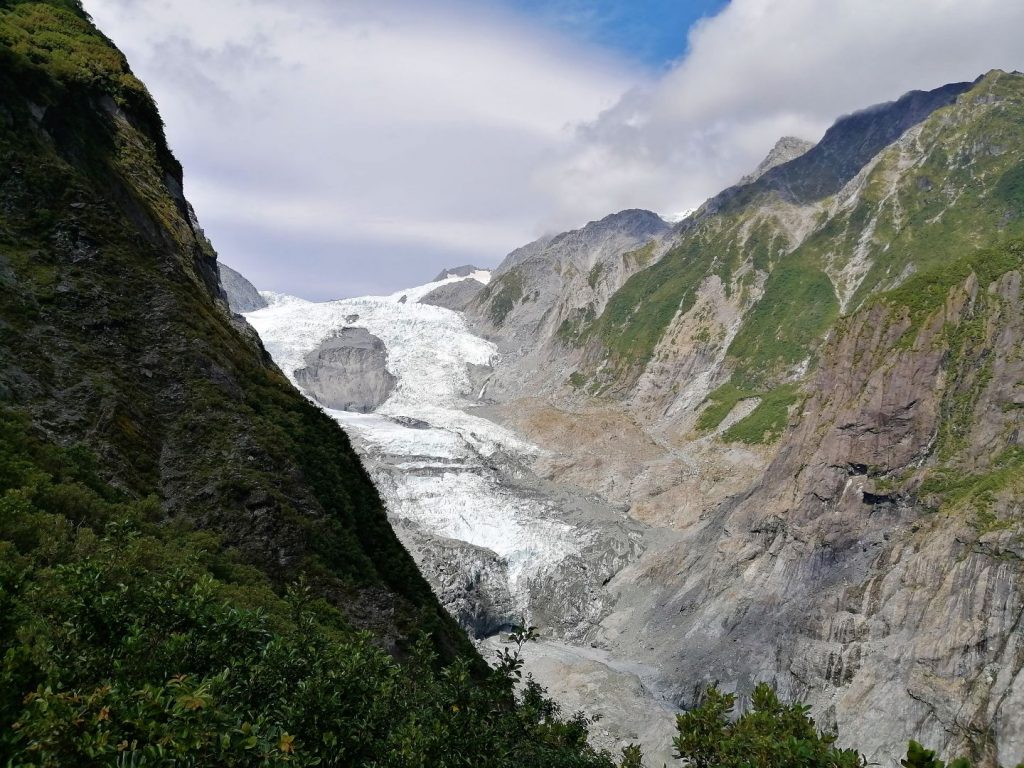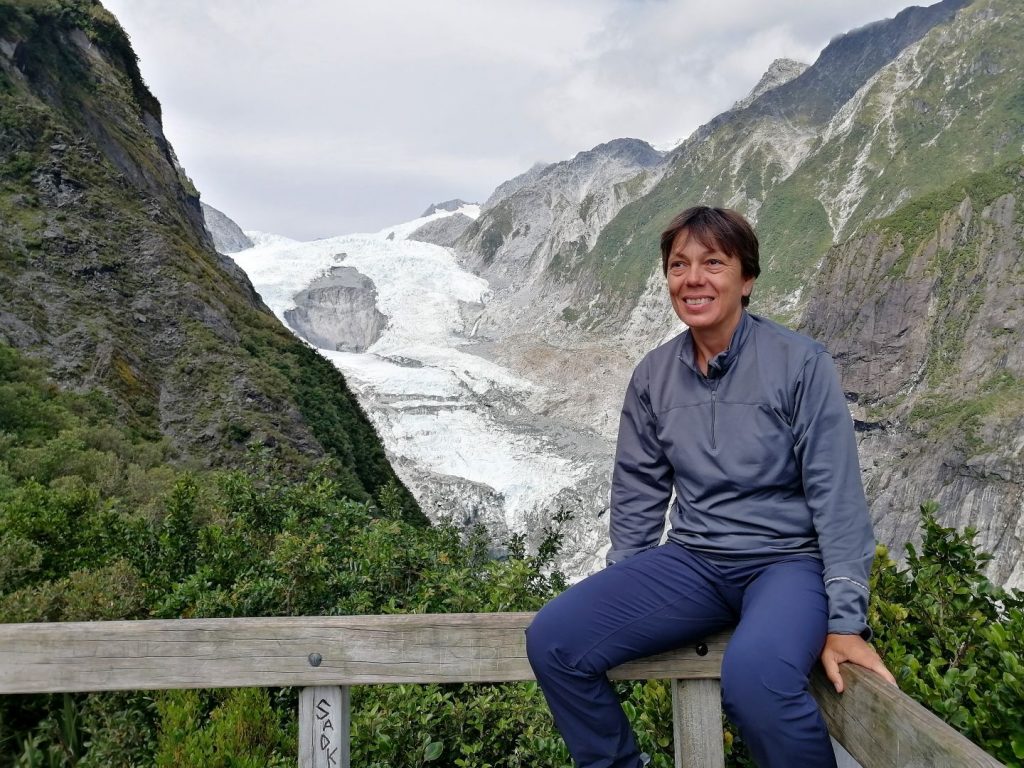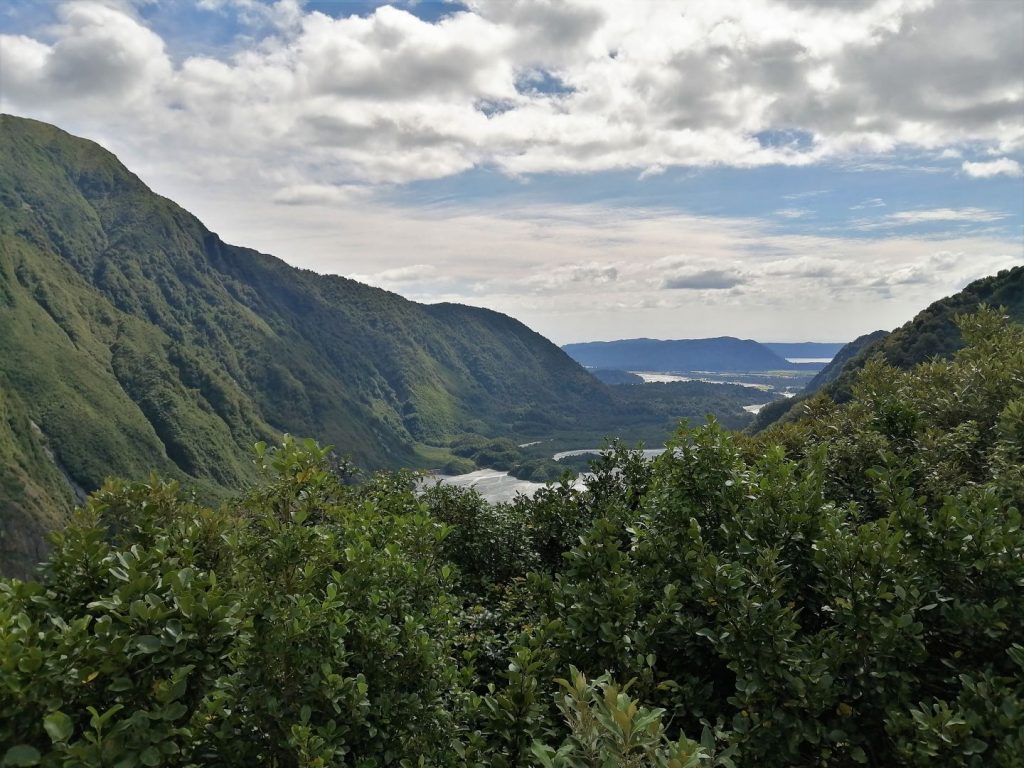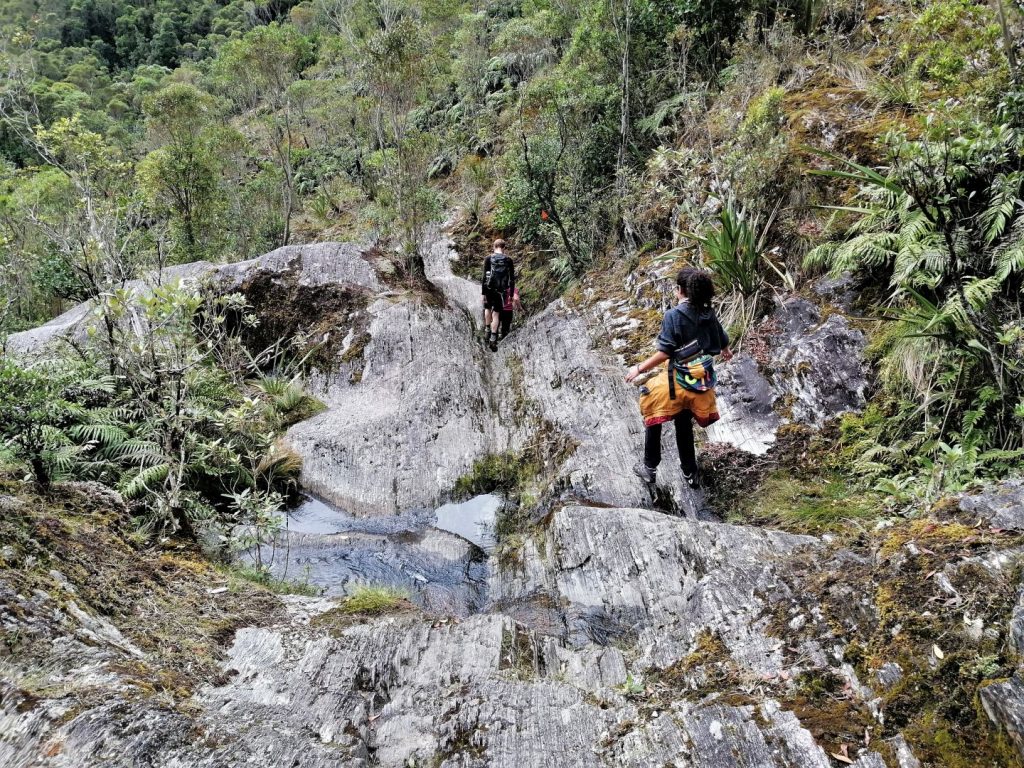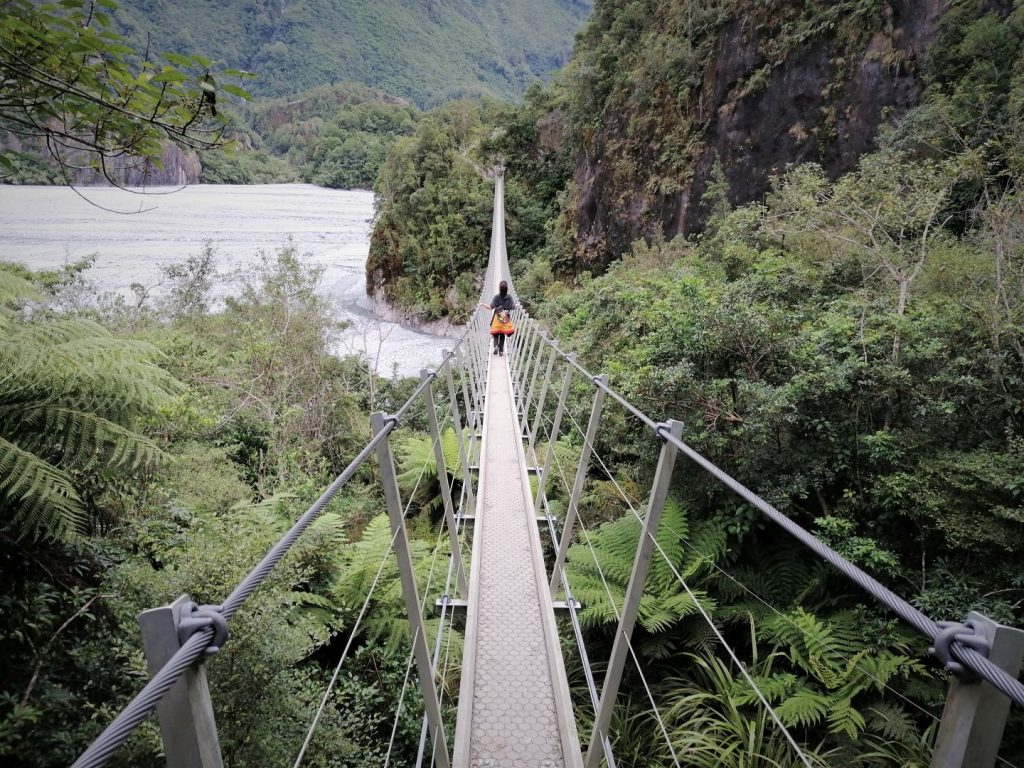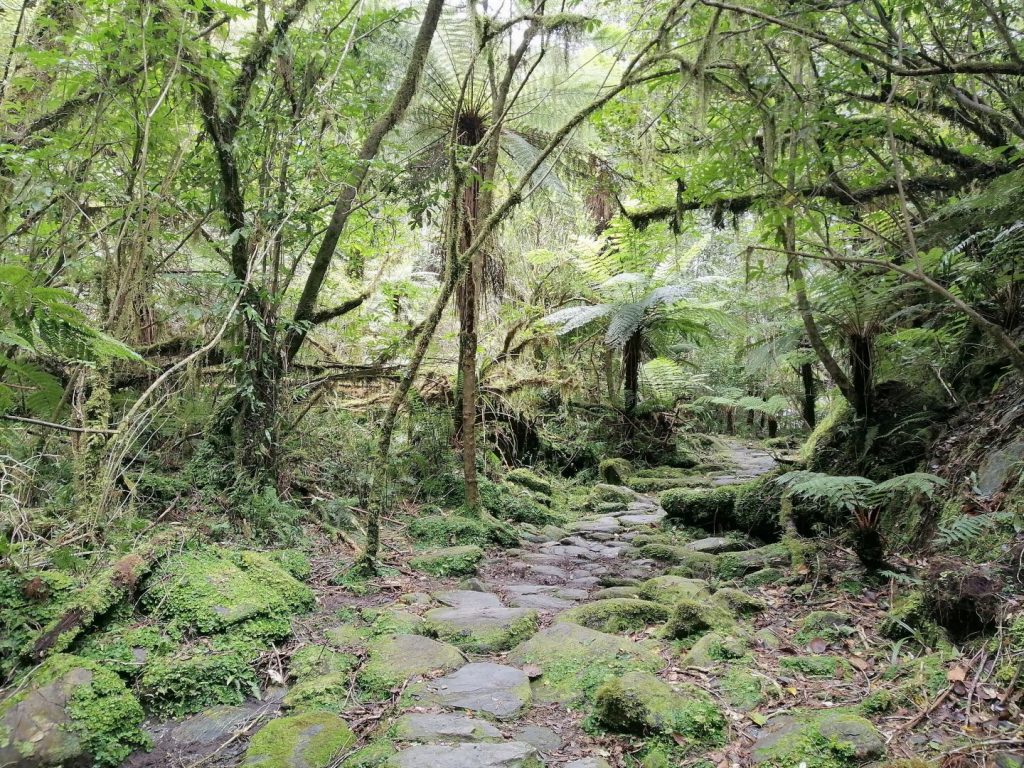Last updated on 20th March 2025
Within the Westland Tai Poutini National Park
Early in the morning, I took the bus from Wanaka to Franz Joseph Glacier. This is a journey through the wild mountains of the west coast of the South Island of New Zeland, the Mount Aspiring National Park and Mount Cook National Park, along the picturesque Haast river, following the wild coastline of the Tasman Sea, through seemingly untouched wilderness, only interrupted by the tourist buses and camper vans.
On our journey, we stopped twice, first to have a look at the amazing Haast River and a driver change, then at the beach to get a feeling of the wild Tasman Sea. We finally passed Fox Glacier and arrived after 5h or so in Franz Josef. The bus driver said that hardly anyone would live here if it would not be for the tourists. The west coast is wet and windy and that’s why most people live north in the sunny town Nelson. They only come here for work. And so, Franz Josef is a very small town with hardly any attraction apart from its beautiful natural surroundings and the glacier.
There are two ways to explore and experience the glacier. One way is to walk to its bottom end along the Waiho river to the point where the water leaves the ice shield. But that point is sometimes dangerous as the glacier moves and the hike was closed during the days I was there. The other way is to take one of the helicopter flights onto the glacier high up in the mountains. Flights are plentiful, the heliport is as busy as a beehive. Every few minutes a helicopter starts or lands, taking tourists to the glacier and back.
The mighty glacier can be seen from the village if the weather allows. The top of the glacier was covered with the ashes of the Australian bushfires a few weeks before which gave it a pinkish shimmer. It is quite visible in the pictures below. I was as lucky as one could be, I had very warm and sunny weather, a rare situation at the west coast. Only two days later it was miserable and rainy again and I heard that helicopters could not take off to the glacier anymore.
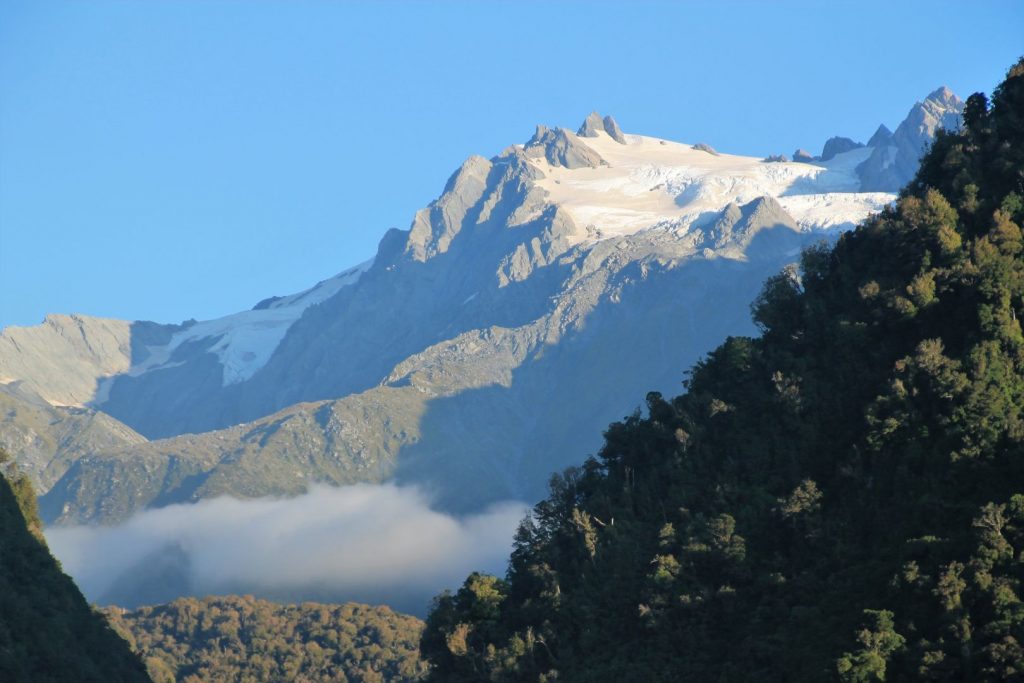
Hiking the untamed wilderness of the West Coast
When the bus approaches the Franz Joseph it will cross a long single lane bridge crossing the rushing waters of the melting glacier water, the Waiho River. The water is rapidly moving, very fast, and it has a white-greyish color from the sediments that it carries. The story goes that in April last year, in 2019, there was so much water coming from the glacier down the river that eventually the bridge gave in and was washed away! It was rebuilt quickly as it is the only bridge on the only road along the west coast crossing Waiho River. Naturally, after the bus dropped me at the local YHA, I came back to the bridge to watch the rushing waters. It is a fascinating spectacle. The bridge provides a wonderful view at the glacier as well if the weather is clear. It was already evening and the light of the setting sun gave a glow to the low hovering clouds and the snowy mountains.
From the bridge starts the Canavans Knob Walk which is a short hike along the river and on top a little hill to watch the sunset. But I was so fascinated by the river, its curling waters and the patterns the water had created in the sand that I actually did not reach the hilltop to watch the sunset from there. The river is shallow but deep enough for kayaks and you can go on the kayak tour rushing down the river from the end of the glacier down to the bridge or even a little further. I have not done it but watched others, I am sure it is an exciting adventure.
Some more beautiful hikes in the wilderness around Franz Joseph are inviting. Unfortunately, at the time I was there some trails were closed due to the amount of water the region must have had recently. So I could not do the fascinating Gallery Gorge Walk. Also, the Franz Josef Glacier Walk, which takes one to the bottom end of the glacier, was closed.
So I ended up doing the Tartare Tunnels Walk. This is a short and easy hike of maybe 30 min moderately up and along the Tartare River that leads to a mysterious tunnel. That tunnel was created at the time of the gold rush to bring pressurized water to the sluicing guns at the gravel faces of the lower river. Later the tunnel was used to feed a hydroelectric power plant. And it was during the building of the powerhouse that the Tatare River Waltz took place. The story is told in detail on the information board in front of the tunnel and it’s too good to just replicate here. You’ll have to go and read it yourself. Through the tunnel still water flows and so I was wading through ankle-high, icy cold water into the dark. After a few meters, the inside of the tunnel becomes pitch black. I can tell you that’s very spooky! But when I turned off the flashlight of my phone to experience this complete darkness I found it was not complete. There were glow worms at the ceiling! Only a few of them but enough to create a dim starry sky. How beautiful that was! At the end of the tunnel there is a fence and unfortunately, it is not possible to access the rushing waterfall that once supplied the water for the tunnel. At that point, I had to turn back.
The Heli Hike
No visit in Franz Josef is complete without visiting the glacier. The Franz Josef Glacier was first explored in 1865 by the geologist Julius von Haast, who named the glacier after the then Austrian Emperor. The glacier is located about 5 kilometres from the village of the same name. The hike from the car park to the viewing platform nearest the glacier along the Waiho River bed takes about 20 minutes. Unfortunately that Glacier Valley Walk was closed. And as I had not seen a glacier closely yet at all, and certainly had not touched or stepped on one, it was clear that I had to participate in one of the Glacier Heli Hikes.
With about 500$ the Heli Hike a massively expensive adventure but it’s promised to be unforgettable and sensational: After an exciting brief flight on board of a helicopter, we would land high in the mountains on Franz Josef Glacier. Up there a tour guide would take us on a two hour guided hike on the glacier. With an eye for the most spectacular ice formations, the guide would lead us through some of the most awe-inspiring glacier scenery. So the advert. Hence, I booked the Heli Hike for the next morning to be safe with the weather.
Before we started we were equipped with waterproof shoes and spikes, warm jackets and thick trousers. In the end we all took of some of it off as it was a nice warm summer’s day and even up on the glacier it was warm, the glacier was melting. The helicopter ride was fantastic and the pilot told us some facts about the area, he also showed us Roberts Point, my destination for tomorrows hike.
Helicopters are starting every few minutes to take tourists up to the glacier, and our group was just one of many others. The glacier walk was truly fascinating: the shapes and the blue shades of the ice, the cracks and reflections, and the narrow passages we had to squeeze through. But at the same time the guided tour was disappointing in terms of distance and guidance. We might have spent two hours but we only walked about 200-300m. We stopped and waited many times on the way and finished so early that we spent 20 min waiting for the helicopter to take us back. Our guide was walking around with a big pickaxe hammering at the ice everywhere while we waited. I could see she really enjoyed doing that just I could not see what for.
Many other pickaxe swinging people were on the glacier as well to create new routes for tourists, at least that´s what they said. Together with all the tourists these crowds on the glacier really took some of the fascination away. I would have been disappointing if it would not have been my first time on a glacier altogether. But as it all was new to me, I really enjoyed that experience and unique impressions: my spiking on the ice and squeezing through narrow ice walls, visiting ice caves, tunnels, seracs and crevasses.
It is possible to stay overnight on the glacier which is an outstanding star gazing opportunity but also ridiculously expensive. After being back at the village we had a little add on in form of a free visit at the thermal bath for free.
Hiking Roberts Point
The Roberts Point Track is one of the oldest and most popular hiking trails on the Franz Josef Glacier. The trail was laid out as a tribute to the scientific achievement of George J. Roberts, a surveyor of the English Crown, and as a foundation for today’s tourism. The hiking trail impresses above all with its flora and fauna. Nature lovers will enjoy the beautiful vegetation of the Rata and Kamahi forests. But also hobby geologists get fascinated. Numerous fault lines have to be overcome on the way and in many places the primeval traces of the glacier can be seen.
The trail is rated to be hard and should not be undertaken during or after rain. It is about 10km return. It can be very slippery. The path leads through several streams and at a few occasions climbing is required. And yes, it is exhausting and strenuous but nothing that cannot be tackled. It takes about 5h but it is definitely worth the effort and risk. Due to all the warnings, I went well prepared and fully equipped with everything a hiker needs, had snacks and water, rain gear, and extra clothes. In the end, it was not as difficult as I thought, and I did not need raingear and clothes. But it was definitely very exciting.
The trailhead is about 5km from Franz Joseph village at the Franz Josef Glacier Car Park. I walked half the way until I was lucky enough to get a lift in a car. I was not aware that there is a public bus going every two hours from the village to the car park. Therefore, it was a 16km hike in total and it took me 5:46h. On my way to the car park, I met a girl that was hiking in the same direction. She originally wanted to do another hike but as the Glacier Walk was closed she joined me. She also made it up to Roberts Point without being prepared as much as I was, just equipped with a bottle of water and good hiking shoes. Amazing.
The trail is just beautiful and surprises with many spectacular attractions. Right at the beginning, we had an astonishing view at Peters Pool with the colorful reflection of the white glacier, green mountains, and blue sky in it. After that, we crossed the Waiho River on the first suspension bridge of this trail. And on the other side of the river a sign with warns the determined hiker informing about some deaths in previous years. At halfway Hende’s Hut awaits the wanderer, an old corrugated iron hut built by a local blacksmith as early as 1907. Other impressive highlights of this outstanding trail are the streams and waterfalls, and several swing bridges. My personal favorite was the unique Rope Creek swing bridge, which is a long and thin bridge that’s sure to get the vertigo flowing. Another highlight were the Gallery Steps: platformed steps that have been bolted into the side of the cliff. This section is really unique, it almost feels like being on a via ferrata track.
End point and absolute highlight of the tour is the eponymous Roberts Point. Here, not only a cosy picnic table awaits the exhausted hikers, but above all a breath-taking view of the Franz Josef Glacier and the surrounding mountain world.
After three days I took the Intercity bus again and went north to Hokitika just for one reason: to get a bicycle and do the West Coast Wilderness Trail!

